The 100 greatest Apple creations
Many millions of people have been drawn to Apple products for a variety of reasons. For some it was the intuitiveness of the Macintosh IIcx, a big beige slab that we could write and capture and process screenshots on. The first Apple experience for many others may have been the first iPod that revolutionised how we listen to music, or the eye-popping colours of the iMac G3 range that was so cool that everyone wanted one in their home.
Although many of us use Apple products in a professional capacity, they have also become integrated into our social and family lives too, allowing us to record the growth of our children and speak face-to-face with loved ones on the other side of the planet. So there will undoubtedly be an Apple product that you cherish above all others.
To mark its 200th issue, our sister magazine iCreate asked its staff, readers and contributors past and present to vote for the greatest Apple creations of all time. These are the Macs, iDevices, gadgets and peripherals that have a special place in your hearts.
As Apple faces what could be a landmark moment in its product design history (read our predictions of what might happen when Jony Ive leaves the company), we hope you enjoy this nostalgic look back through Apple’s greatest hits. These are the devices that helped to break new ground and redefine how we use and interact with technology today. Ladies and gentlemen, please be upstanding for… the 100 greatest Apple creations.
100. Apple Keyboard with Numeric Keypad (2007)
Still loved, this keyboard was encased in solid aluminium and was the first in 27 years to ditch the Apple logo on the Command key. It also features two USB 2.0 ports at either end.
99. iPhone 7 (2016)

Similar in design to the iPhone 6 – but also available in the lovely new matte black and jet black options – the also sported one other significant change in the exterior design: the omission of the 3.5mm headphone jack. Replaced by a second speaker grille (that also served as a vent for the internal barometer), the removal of the standard headphone jack meant that users had to either use the supplied EarBuds that connected via a Lightning connector or use their own preferred headphones with the Lightning-to-3.5mm connector adaptor that was also bundled with the device.
The iPhone 7 uses the Apple A10 Fusion 64-bit system-on-chip that provides, amongst many other great things, console-quality gaming while on the move.
98. iMac (2011)

The mid-2011 range of iMacs were reliable workhorses with Intel Thunderbolt technology and Intel Core i5 and i7 Sandy Bridge processors. Sadly, the release of macOS Mojave cut them adrift from Apple’s eco-system.
97. iPod touch 5th gen (2012)

An iPhone in all but the actual cellular phoney bit, the iPod touch can be used to play music, take pictures, browse the web and play games. Mostly this has remained the same in design, although the low-end 16GB 5th generation models were particularly notable as they were sold without a rear-facing camera. Still hugely popular, the iPod touch 7th generation went on sale in May.
96. HomePod (2018)
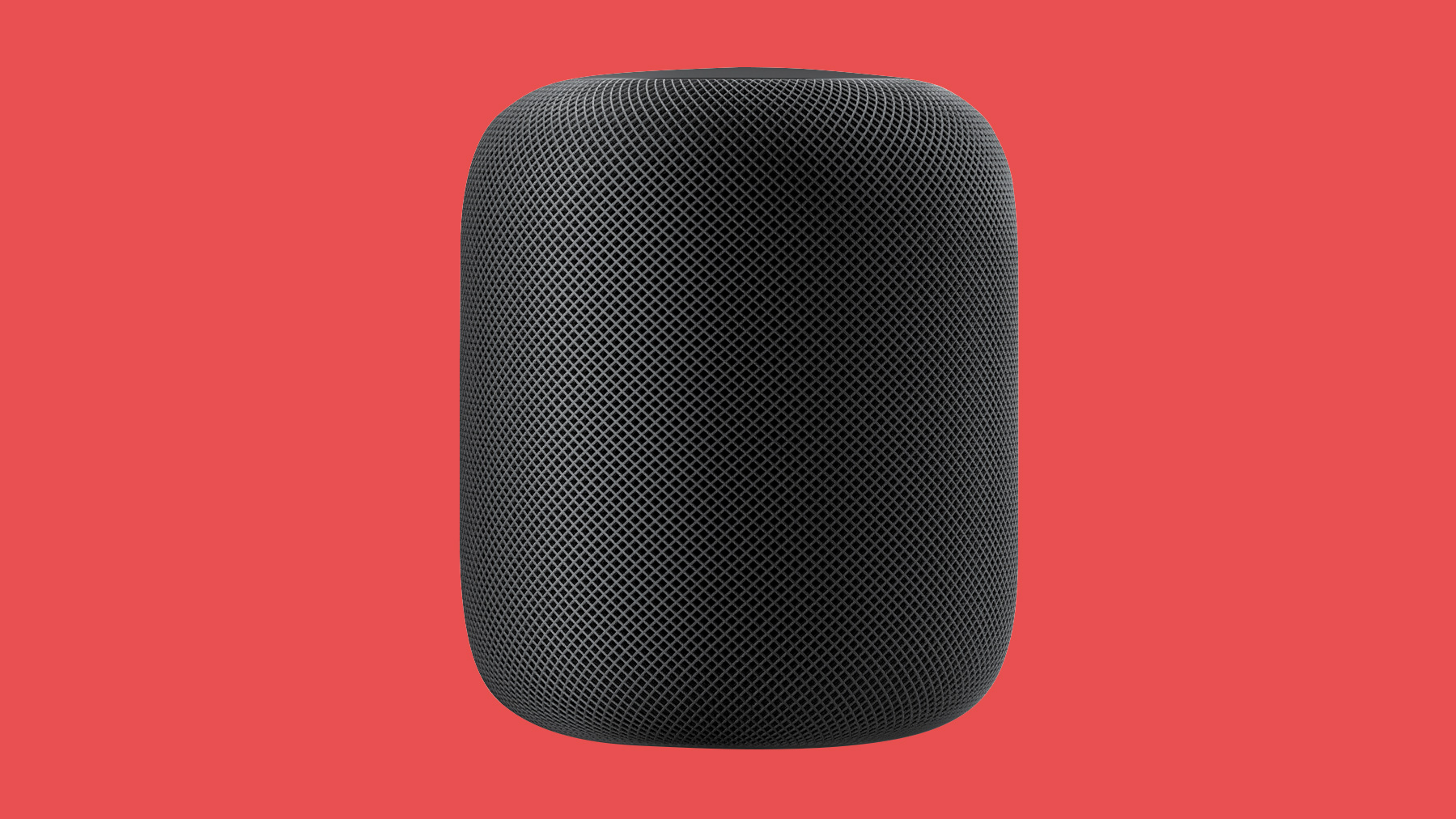
Apple’s long-awaited smart speaker is designed to work with Apple Music to create a new way of discovering and interacting with music in your home. The features seven tweeters, a four-inch woofer and six microphones so that Siri can listen out for your commands. The sound quality, for the price, is brilliant.
95. Macintosh IIci (1989)

A more powerful version of the Macintosh IIcx, released earlier the same year, and featuring the same three expansion slots but with added speed and efficiency courtesy of 25MHz versions of the IIcx’s Motorola 68030 CPU and 68882 FPU chips. This, too, could be used in either vertical or horizontal orientations.
94. iPod Shuffle 1st gen (2005)
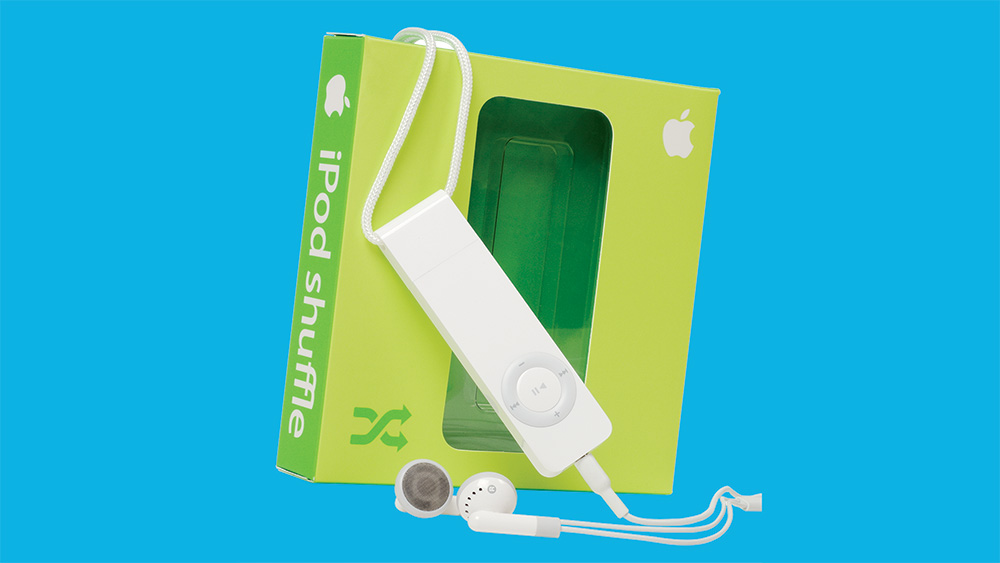
A cheaper MP3 player that was designed to be easily loaded with a selection of songs and to play them in a random order. It was also the first member of the iPod family to use flash memory.
93. iMac G5 20" (2004)

This is the iMac that kick-started the design trend of iMacs that has continued to this day. Ditching the detached base and display look of the G4, this iMac made the display the computer.
92. Magic Mouse 2 (2015)
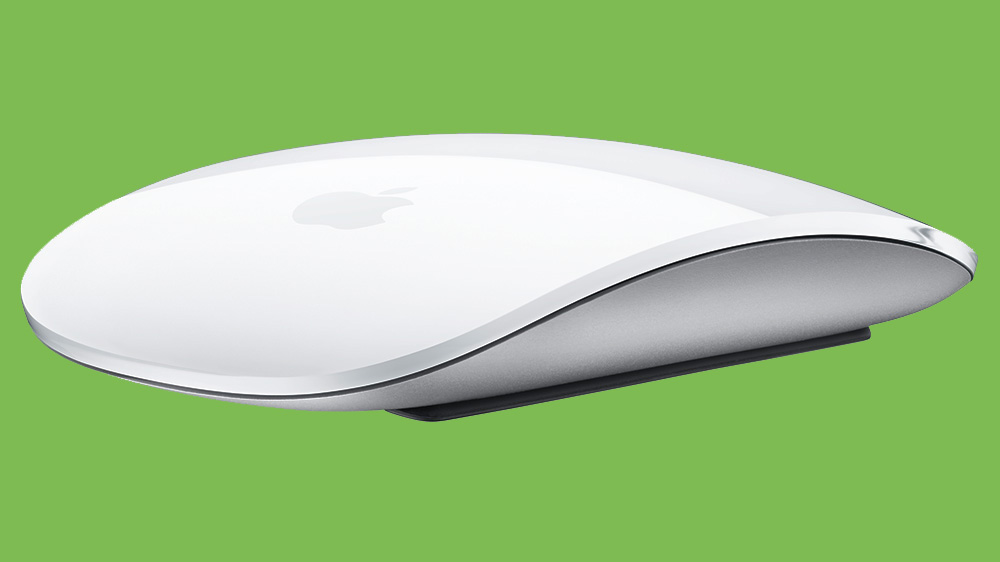
This wireless mouse features a multi-touch surface for scrolling and can detect gestures. The works with any Mac running macOS El Capitan or later and features a lithium-ion battery that can be recharged with a Lightning connector. Strangely, the port for the cable is on the underside of the mouse, meaning that you can’t actually use it while it is recharging. Comes in two colour variants – Silver and Space Grey.
91. iPod Radio Remote (2006)
This add-on was a convenient way for iPod users to skip tracks and adjust the volume, even when their iPod was in their pocket or backpack, and listen to FM radio while displaying the station and song info on their iPod screen. Connects between the iPod and the earphones.
90. LED Cinema Display (2008)
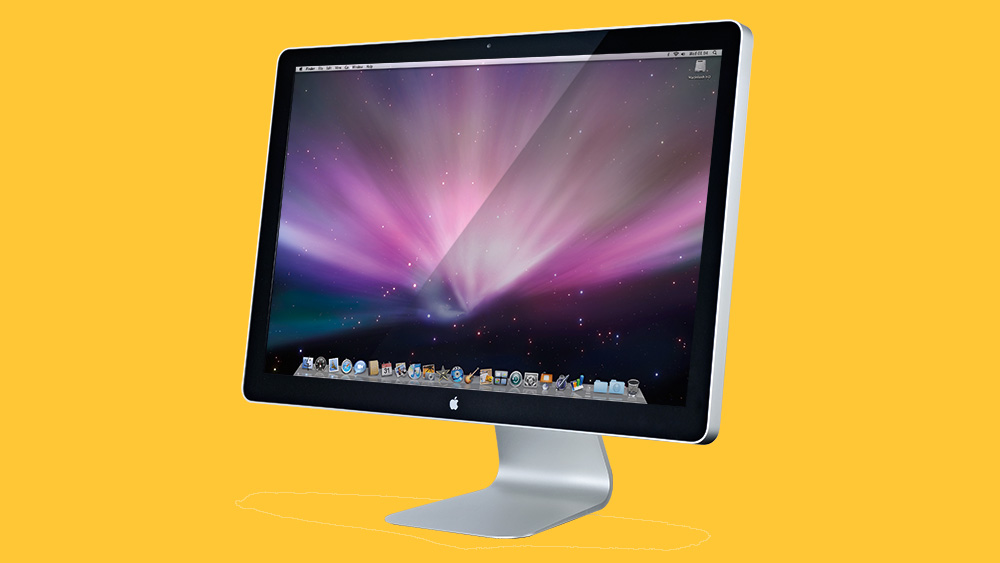
The 2008 update for the Cinema HD Display was this 24-inch beast that was modelled on the latest iMac, complete with aluminium surround. The display also came with a built-in iSight camera, mic and dual speaker system. The first Cinema Display with LED backlighting.
89. iPhone 4s (2011)

The 5th generation iPhone first introduced us to Siri (which is what the ‘s’ stood for). Apple’s intelligent personal assistant was exclusive to the iPhone 4s before being rolled out to all future generations of iPhone. The unit also featured an improved chipset.
88. Nike+ iPod (2006)
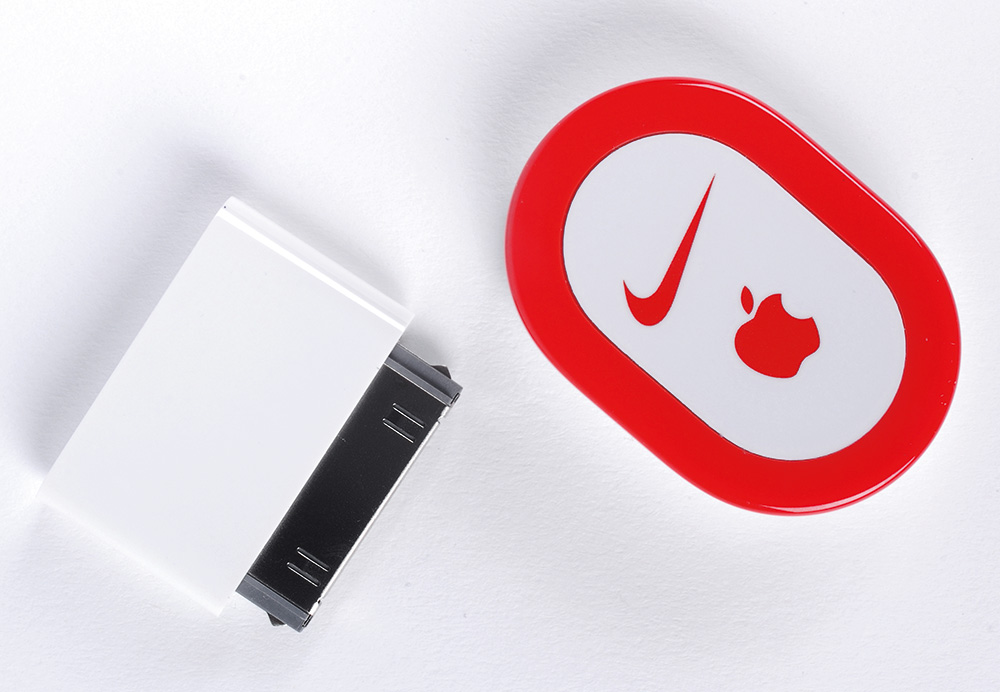
Consisting of a small transmitter that attached to your training shoe and communicated with a receiver plugged into your iPod, the Nike+ iPod measured distance and velocity and paved the way for connected sport apps as we know and use them today.
87. iPod Photo (2004)
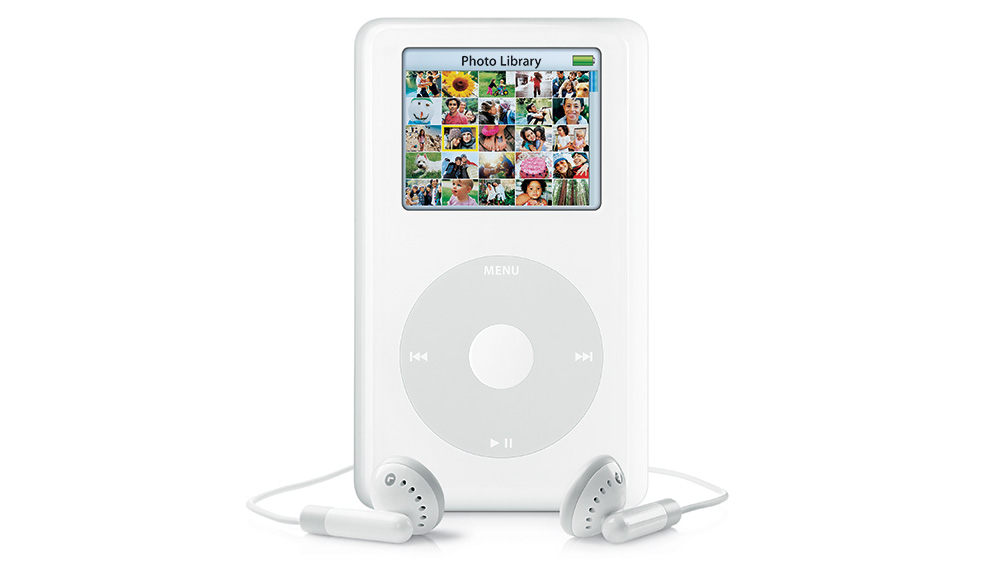
Alongside the special U2 edition iPod, Apple also unveiled the iPod Photo in 2004 as a premium version of the standard 4th generation iPod. This device featured a 220x176 pixel LCD screen, supported multiple image formats and came with a cable that could connect it to your TV.
86. Photos (2014)
First released with iOS 8, Photos replaced Camera Roll as the default photo management app on iOS and also phased out iPhoto and Aperture when it came to Mac the following year. Photos makes it easy to edit and organise your entire picture library.
85. Apple Pencil (2nd Gen) (2018)

Designed exclusively for use with the 3rd generation iPad Pro, the second ditches the Lightning connector in favour of USB-C and is now charged and paired using the magnetic Smart Connector on the side of the tablet.
84. iPad 3rd gen (2012)
The third coming of the iPad featured a Retina display, the new Apple A5X chip with quad-core graphics processor and a 5MP camera with HD 1080p video recording. Amazingly, this tablet only lasted seven months before the announcement of the iPad 4.
83. iPhone XS (2018)
Near-identical in design to the iPhone X, the features upgraded hardware in the A12 Bionic chip, a 5.85-inch OLED display and dual 12-megapixel rear cameras and one seven-megapixel front-facing camera. Replaced the iPhone X as the flagship iPhone after just 10 months.
82. AirDrop (2011)
First introduced with macOS Lion, AirDrop allows Mac and iOS users to transfer files quickly and easily between devices over Wi-Fi and Bluetooth without using Mail or mass storage devices. There is no restriction on the size of the files that can be transferred.
81. MacBook Pro with Retina Display 3rd gen (2015)
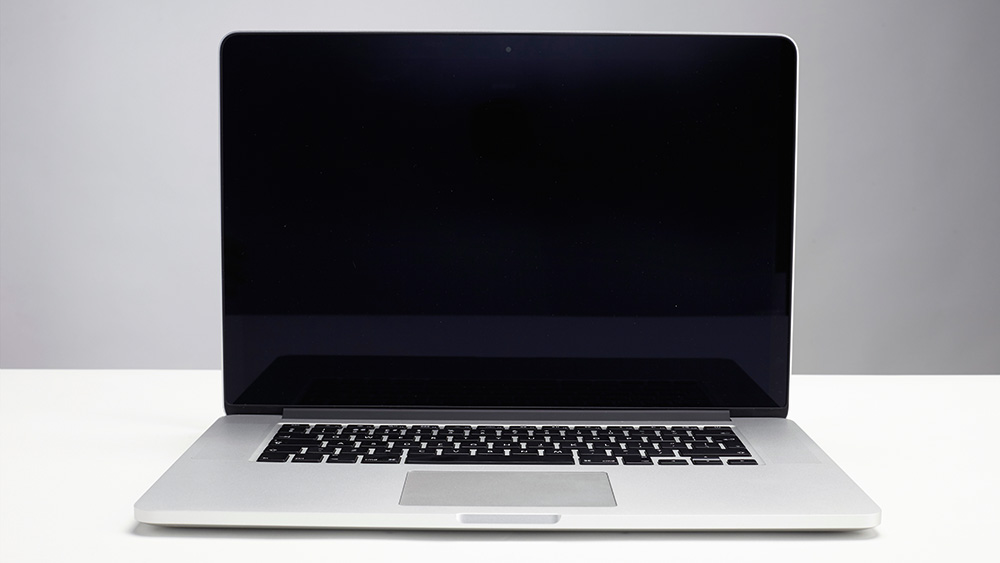
Thinner than its predecessor, the 15-inch MacBook Pro was the first to include a high-resolution IPS 2880x1800-pixel Retina Display and also boasted a reconfigured port set, including a second Thunderbolt port, an HDMI port and a thinner MagSafe port dubbed the ‘MagSafe 2’.
The Retina MacBook Pros were updated in early 2015 to include faster flash storage, increased battery life, an AMD Radeon R9 graphics card and the Force Touch trackpad. This new control interface uses pressure sensors to distinguish between the various levels of force being applied to the trackpad – much like 3D Touch on iOS. The result was a much more efficient MacBook with a trackpad that could be used for a lot more than pushing the cursor around the screen. The following year would introduce the Touch Bar to MacBooks, adding yet another new control thread.
80. Apple TV 2nd gen (2010)
The smaller 2nd generation Apple TV ran a version of iOS which gave it a smoother experience and a more modern feel when in use. The streaming of media became the default option and the 8GB flash storage ensured that buffering would be a thing of the past.
79. iPod Classic 6th gen (2007)
Up to 36 hours of battery life, a thinner form and redesigned interface made the final iPod Classic release a worthy product in a sea of many great devices. The 160GB of storage for a huge music library made it a near perfect portable entertainment device.
78. iMovie (1999)
iMovie brought the world of video editing to the world in a way that made it possible, and enjoyable, for everyone. Its power lies in the way it can handle complex data in the most efficient way, to the point that you can even edit video on an iPhone or iPad.
77. Apple Wireless Keyboard (2007)
Theoretically, the later Apple Wireless Keyboards should not be as usable as standard keyboards, but the opposite is true. The shallow keys and minimal use of colours make for a design that should not be easy on the fingers or the eyes. They do, however, offer the ability to input data and text extremely quickly once you get used to how they work. Battery life is immense and the connectivity side holds up thanks to a very stable Bluetooth connection. The newer versions are a world away from the original, which came with clicky keys, the need for four AA batteries and an older style on/off switch.
As time passed, each of the wireless keyboards mirrored the style of the day and the forms became smaller and slimmer. There are no USB ports or extra features, but this is actually an advantage because you are left with a device that does exactly what it needs to all of the time.
76. AirPort Express 802.11g (2004)

This very important and small product offered networking for up to 50 users, AirTunes (which was similar to what we know now as AirPlay) and enough ports to cater for wireless printing and music playback. To have these capabilities back then was staggering.
75. PowerBook G3 (1997)
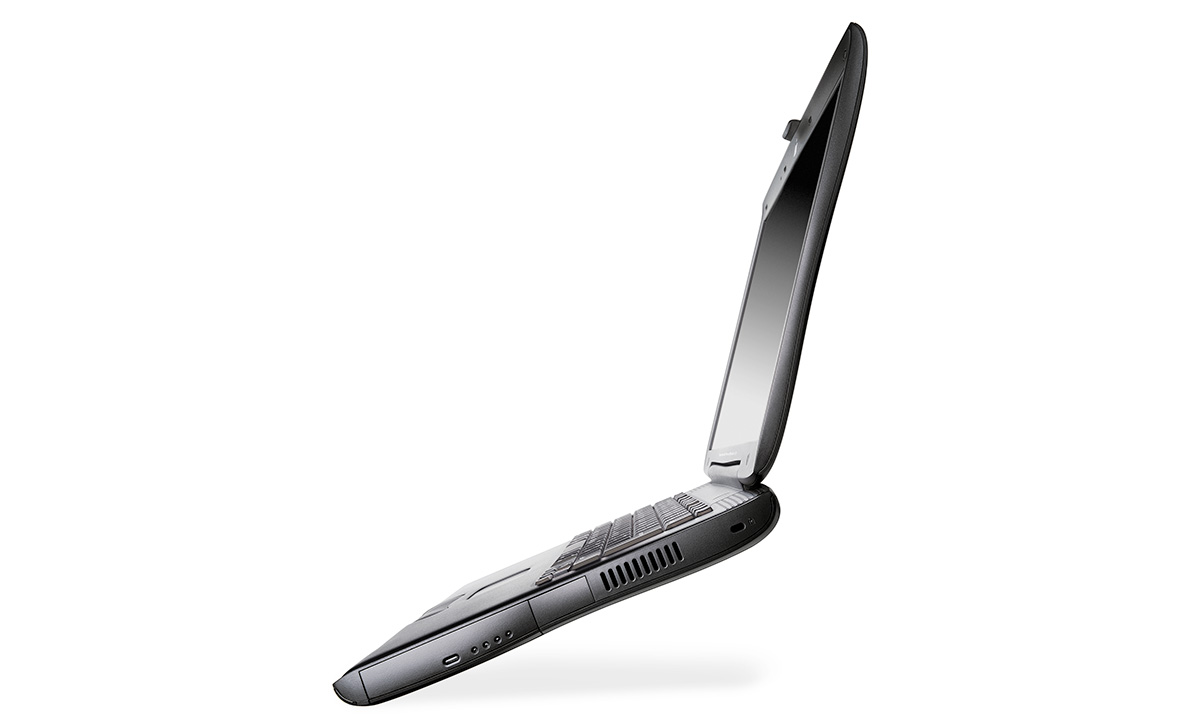
During its lifetime the PowerBook G3 was the fastest laptop available thanks to the (up to) 292MHz processor. There were multiple options available in terms of memory, graphics and hard drive space and the design has a friendly form that remarkably does not look out of place today. It’s a genuine Apple classic and a treasured memory for anyone lucky enough to own one.
74. Apple Watch Nike+ Series 2 (2016)
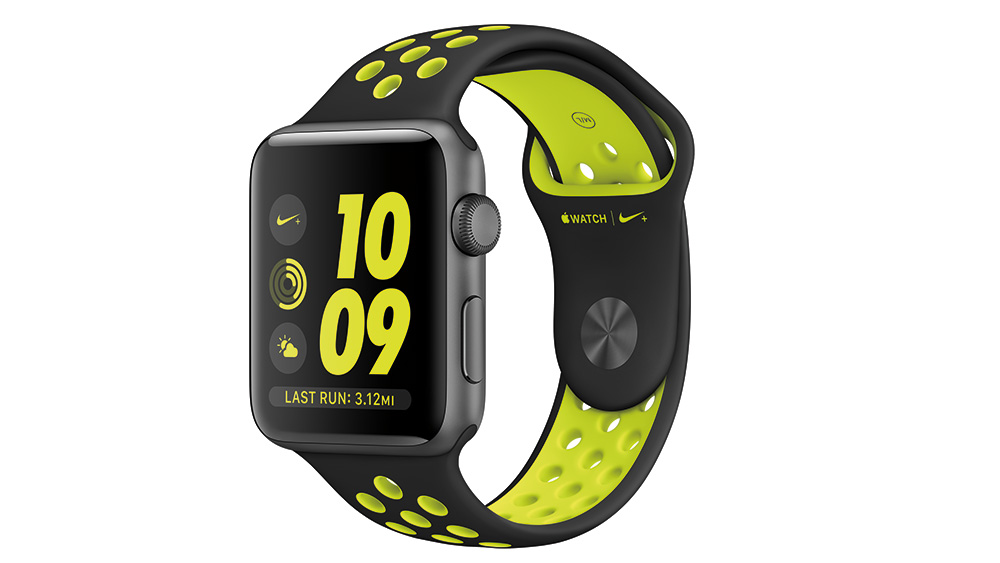
With 50 metres of water resistance, swimming tracking and much faster app performance, the was more suited to sports and fitness than ever. Throw in the Nike branding and official Nike faces and you have a stylish sports assistant that oozes personality.
73. Thunderbolt Display (2011)
The Thunderbolt Display looks familiar, but it is the single Thunderbolt connection that makes all of the difference for gaming, graphics and many other activities. It is the one product that serious Apple fans want brought back more than any other.
72. Safari (2003)
Safari has a long history and one in which it had to battle hard against the bigger players in the early days. Over time, however, it has grown to be a stable and secure browser which ticks all of the boxes for the majority of Apple owners. It has few competitors.
71. Power Mac G4 MDD (2002)

The ‘Mirrored Drive Doors’ G4 brought dual-processors with level 3 caches to the line and also added superior graphics cards. The design is bold to say the least and the drive doors draw the eye to them every single time. It was powerful, big and a firm fan favourite.
Next page: Best Apple products 70-41
70. AirPlay (2010)
Technically, AirPlay was released in 2004 under the AirTunes moniker, but no matter what you call it the technology was way ahead of its time. It allows the sending and receiving of commands and media between Apple devices and can enhance your home entertainment.
69. iPod 4th gen (2004)

This brought in the click wheel from the iPod mini and USB charging, but it was the associated model with a colour screen and photo viewing that made the product feel like a genuine move up from previous models. The iPod was suddenly not just about music.
68. Mac OS X Snow Leopard (2009)
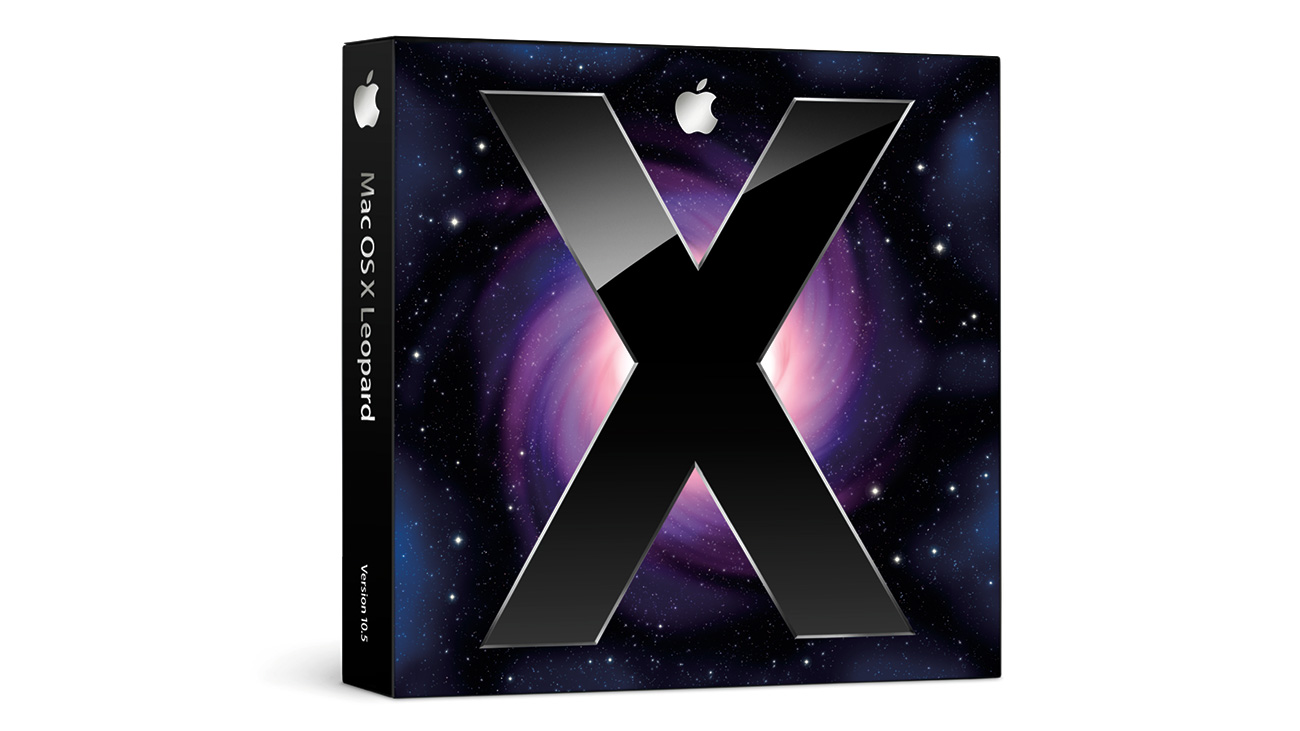
Snow Leopard was an unusual release for Apple back in 2009 because it was designed to bring greater efficiency to Mac OS X rather than add new features. It didn’t support PowerPC processors, which was a major signal that Apple was ready to look to the future, but support for PowerPC-only apps was still included. The improved performance philosophy has continued in macOS ever since.
67. TextEdit (1996)

For many, TextEdit is an old-fashioned app that sits on a Mac doing little. For the rest of us its simplicity is what makes it so useful. It can read a variety of file types and is favoured by coders who want the purest of forms for their content.
66. GarageBand (2004)
For music and podcast creation GarageBand is hard to beat. Crucially, it is designed for real musicians as well as those who want to DJ or create electronic music and this is why it has remained so versatile and popular. It is also completely free and has been regularly updated by Apple for many years.
65. Apple EarPods (2012)

The were marketed as designed to fit almost any ear and by and large that proved to be true. At a good price and with a classic Apple appearance they sell in huge numbers and the unobtrusive microphone and playback controls sit quietly waiting to be used. A true Apple design classic.
64. Apple Mighty Mouse (2005)
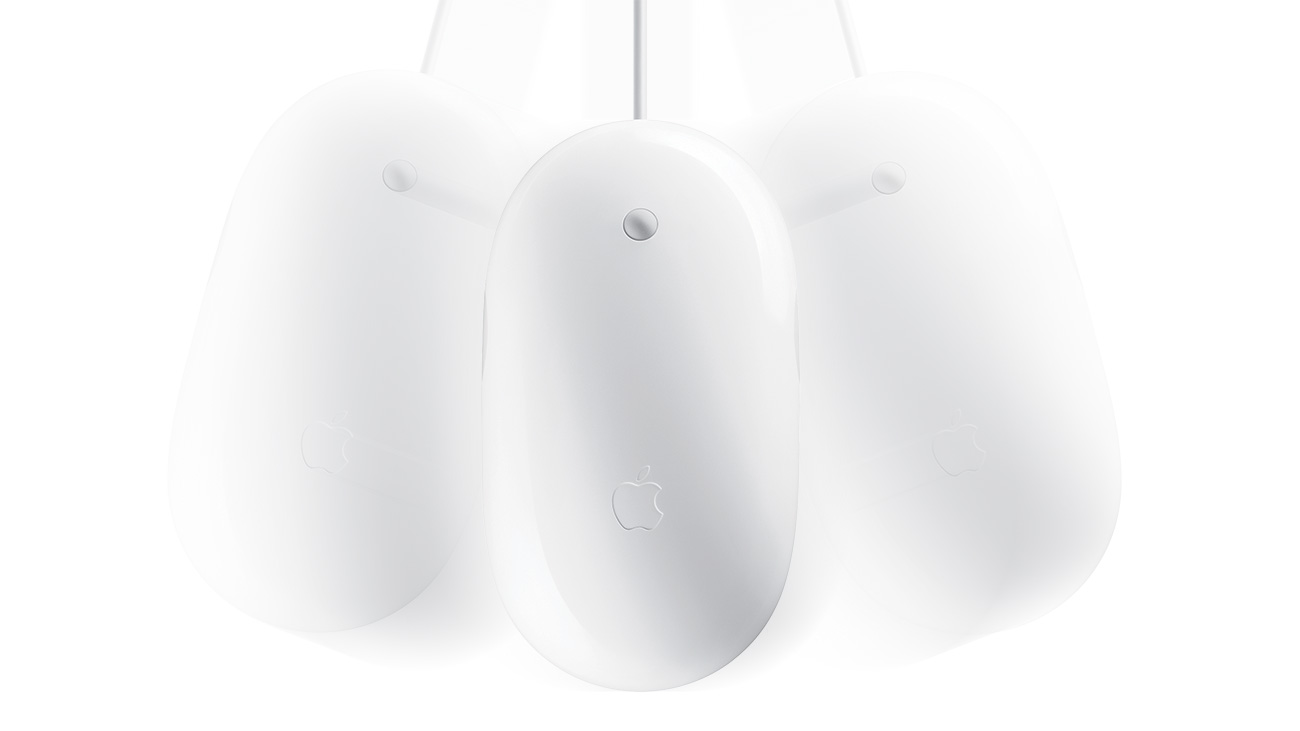
Though this gadget divides many Apple users, it was nevertheless a significant breakthrough being the first Apple mouse to use two buttons instead of one. It also included a miniature trackball.
63. PowerBook G3 ‘Pismo’ (2000)
The fourth generation PowerBook G3 really ramped up the pace with CPU speeds of up to 500MHz and featured plenty of welcome updates, such as a 2x DVD-ROM drive and a new Firewire interface.
62. MacBook Pro with Touch Bar 4th gen (2016)
With lots of power, a great screen and keyboard, the Touch Bar was Apple’s only practical way to enhance the MacBook Pro, adding an innovative navigation feature with plenty of benefits.
61. Macintosh LC (1990)
The unique design of the LC shows that aesthetics have always been a part of Apple’s DNA. The LC was designed to appeal to schools and those looking for computing at a reasonable price.
60. Macintosh Portable (1991)
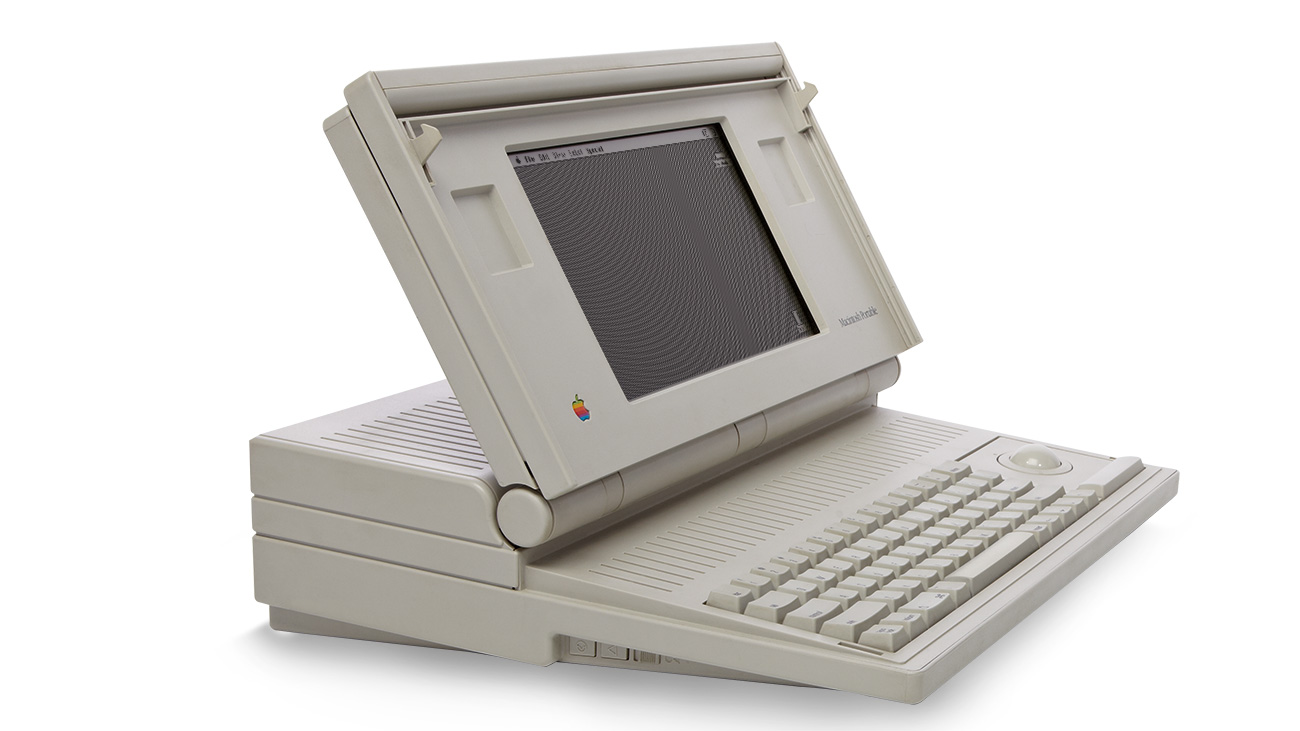
The Macintosh Portable is a hugely important product in the history of computing and despite its short lifespan it is remembered for all of the right reasons. In 1991 a backlit version was released with a new screen and, amazingly because of this change, half the battery life the predecessor offered. The specifications appear laughable today (16MHz processor, just 1MB of RAM and a 40MB hard drive), although at the time it truly was a first and one that gave a glimpse of a possible computing future that would surely never come, but it did.
The ‘Portable’ name also offers a sense of early computing when you consider that this computer was 16 pounds in weight and four inches thick. A good example of how Apple has been there pushing boundaries right from the very start.
59. Power Macintosh G5 dual-core (2005)

Moving to dual-core processors in the G5 line of Power Macs made for a huge bump in performance and continued to ensure the reputation of the G5 as one that could cater for pretty much every demanding task thrown at it.
58. Mac mini Core Duo (2006)
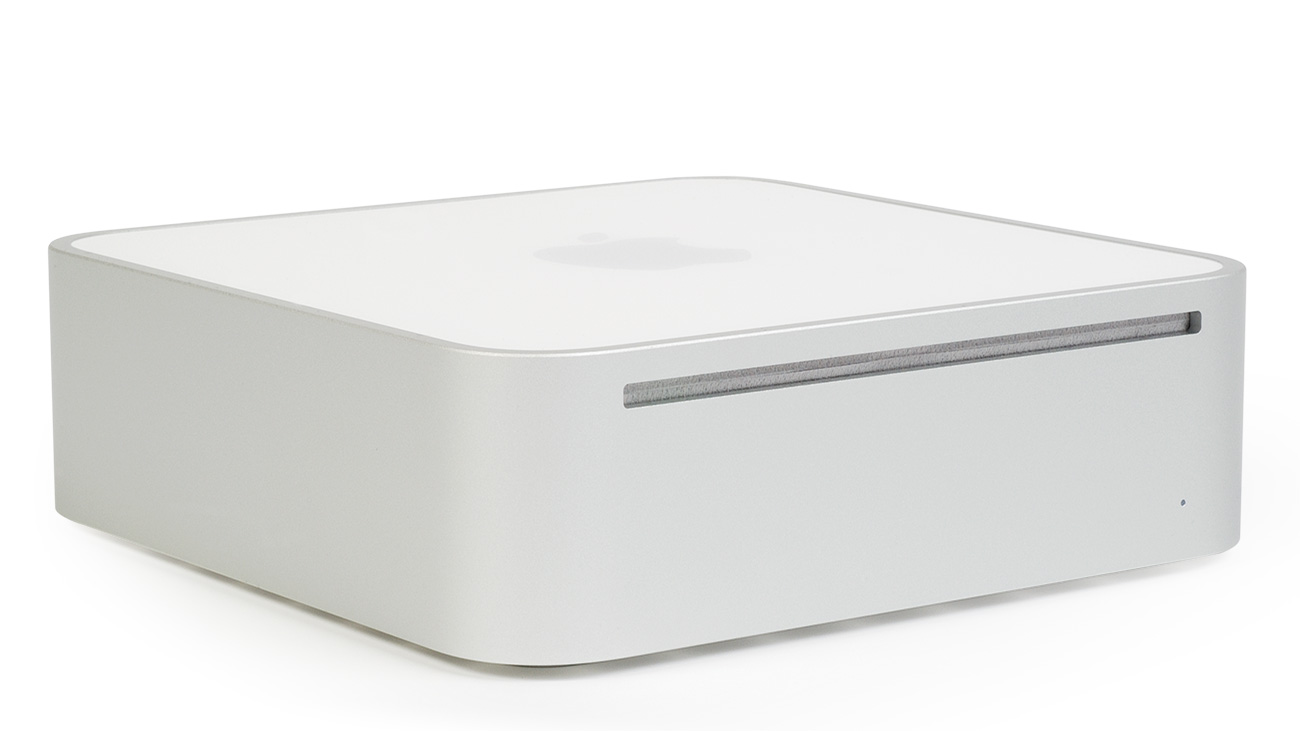
Back in 2006 the release of a Mac mini that offered a 1.83GHz (T2400) Intel Core Duo processor was impressive. Throw in 80GB of storage, 512MB RAM and multiple ports and you had a device that could do almost anything.
57. Power Mac G4 Graphite (1999)
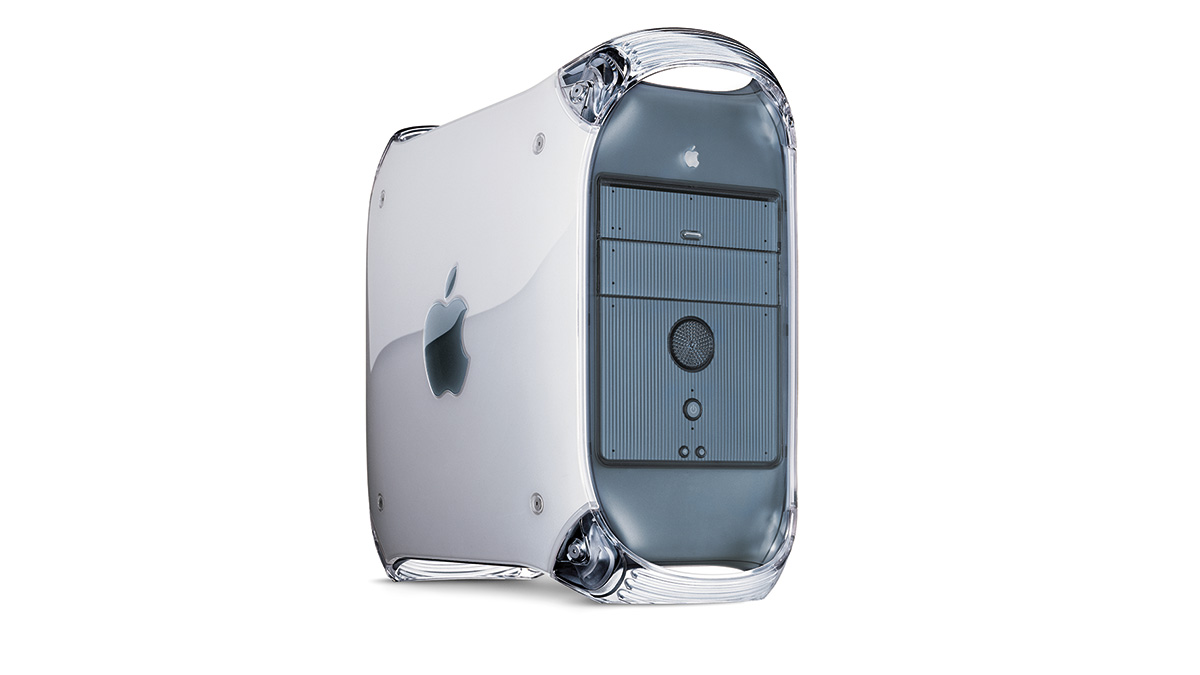
With specs that had previously been marketed to professionals, the Power Mac G4 offered a gateway into the world of true computing for everyone thanks to the 10GB hard drive, 400MHz processor and up to 1GB of RAM. In graphite it looked ace too.
56. iPad mini 5th gen (2019)
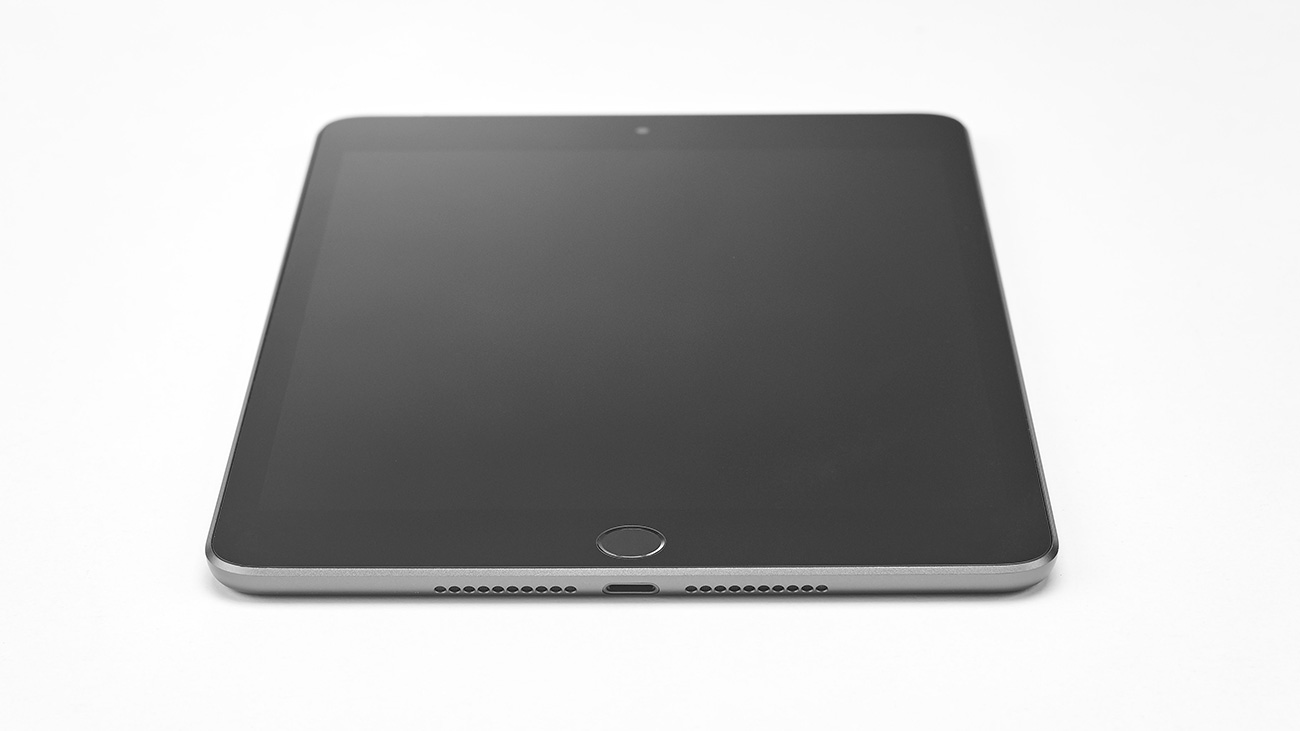
Now with Apple’s A12 Bionic chip inside, the latest iPad mini is three times faster than its predecessor, features a gorgeous True Tone display (which allows the LCD to adapt to ambient lighting) and supports Apple Pencil (1st gen).
55. AirPods 2nd gen (2019)
The second wave of AirPods include an H1 processor that supports hands-free 'Hey Siri', Bluetooth 5 connectivity, faster device connection times and more talk time. The optional Wireless Charging Case also works with Qi chargers.
54. Magic Trackpad (2010)
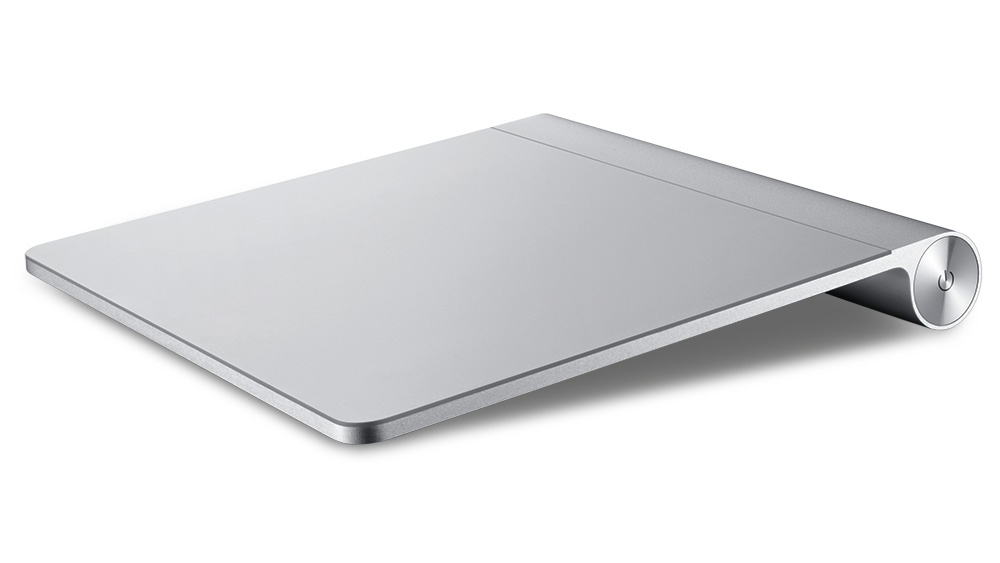
For many people the Magic Trackpad is the perfect solution. It replaces a mouse, it looks fantastic and design-wise it adds symmetry to any desk. If you take the time to understand it and get used to the way it works you may never use a mouse again.
53. AirPort Time Capsule (2008)
The promise of full automatic backups without the need to physically connect another device to your computer makes the price of admission worthwhile, despite the advent of iCloud.
52. iPhone X (2017)
Apple’s first bezel-less iPhone brought many firsts to the mobile party. Face ID was a major inclusion alongside animated emojis and the omission of the legendary Home button.
51. Newton eMate 300 (1997)

Part PDA and part laptop, the eMate 300 gave students a new kind of device to work with and one that offered up to 28 hours of battery power from one charge. Also, the keyboard was close to being full-sized and the machine was quick due to the relatively low specification.
The memory expansion slot was useful for beefing up storage and the 6.8" screen was perhaps the only drawback of a relatively large device. With a design that is completely unique in the computing world it divides opinion, but there are elements that show where Apple was likely to head all those decades ago and there is a personality in the form that makes it truly a one-off creation. Ultimately it did not succeed for a variety of reasons, but we have to admire the fact that Apple even attempted it.
50. Apple Cinema Display (2004)
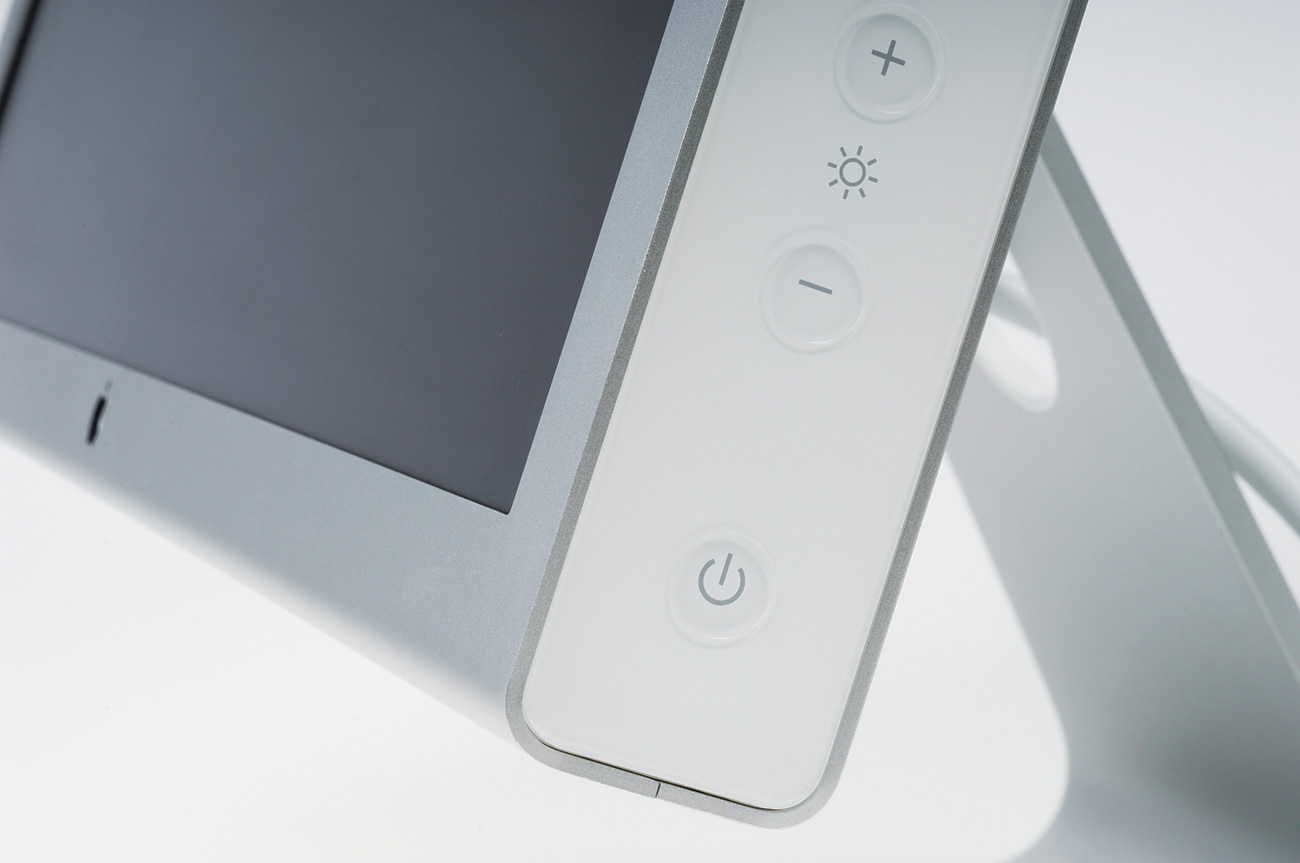
The Cinema Display brought a 30” screen to the party alongside an aluminium enclosure that worked better aesthetically with the computers it was designed to supplement. It is sorely missed with the iMac considered the replacement.
49. Power Macintosh G5 (2003)
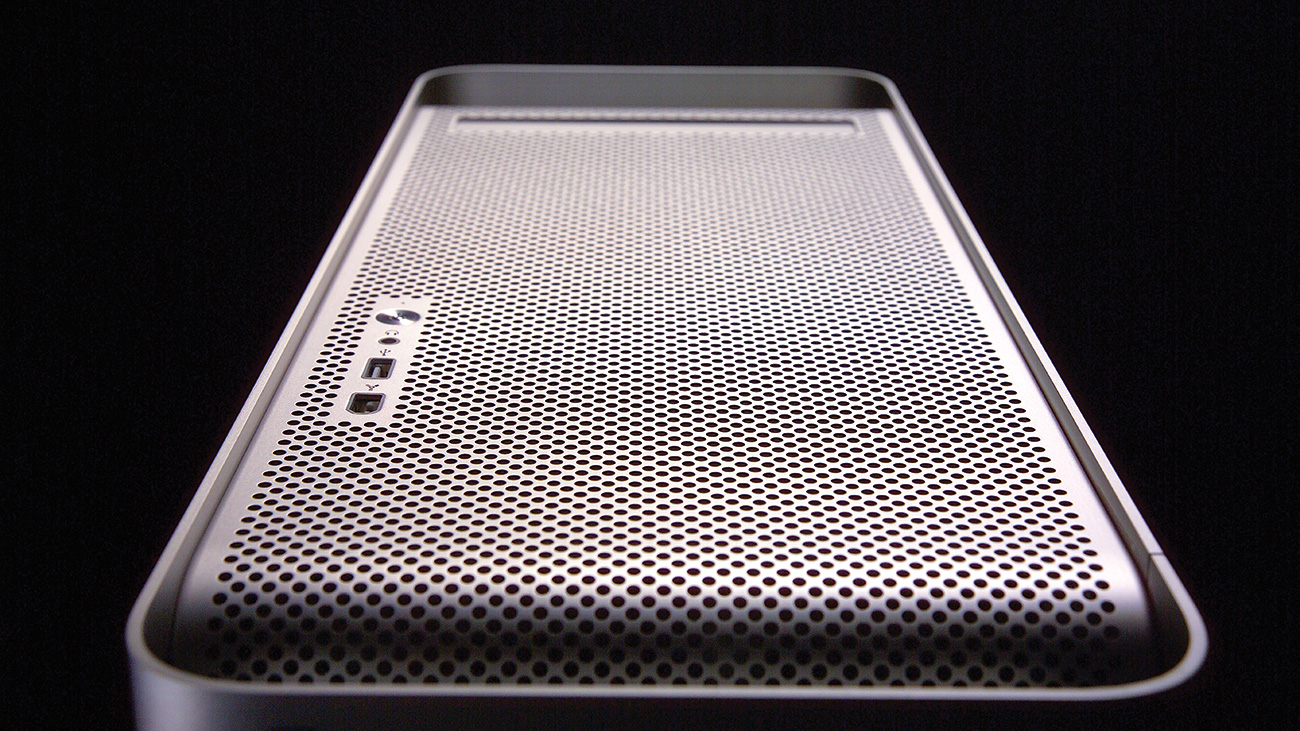
Apple could boast that the Power Mac G5 was the world’s first 64-bit desktop computer. Every spec was designed to cater for those who needed serious power to do serious things and the anodised aluminium structure made for not only a strong device, but one that looked amazing. With seemingly limitless expansion options, it truly was a darling of professional Apple users everywhere.
48. AirPort 802.11b ‘Graphite’ (1999)

The Graphite base station showed the world that wireless connectivity could be possible and indeed could be a pleasing experience. With a space-age design housing an ethernet port and a dial-up modem, it put Apple firmly in the lead in this sector of the market. The AirPort name has stuck ever since.
47. iPod Nano 1st gen (2005)
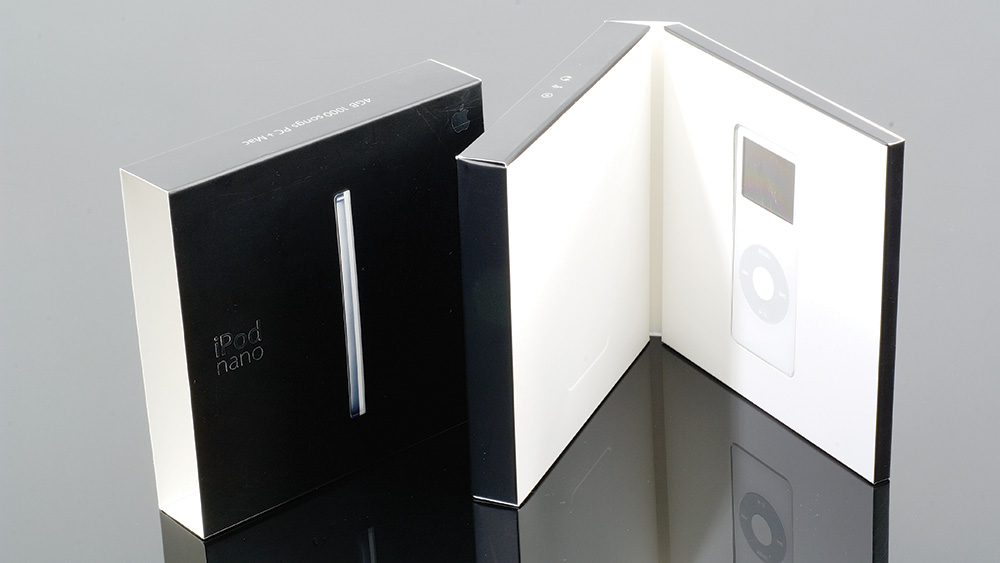
As the name suggests, the Nano was all about size and true portability. The small colour screen made 14 hours of battery life possible and it could hold hundreds of tracks despite its tiny form. It took on many forms over the years, but the original click wheel model remains a firm favourite among Apple fans.
46. iBooks Author (2012)
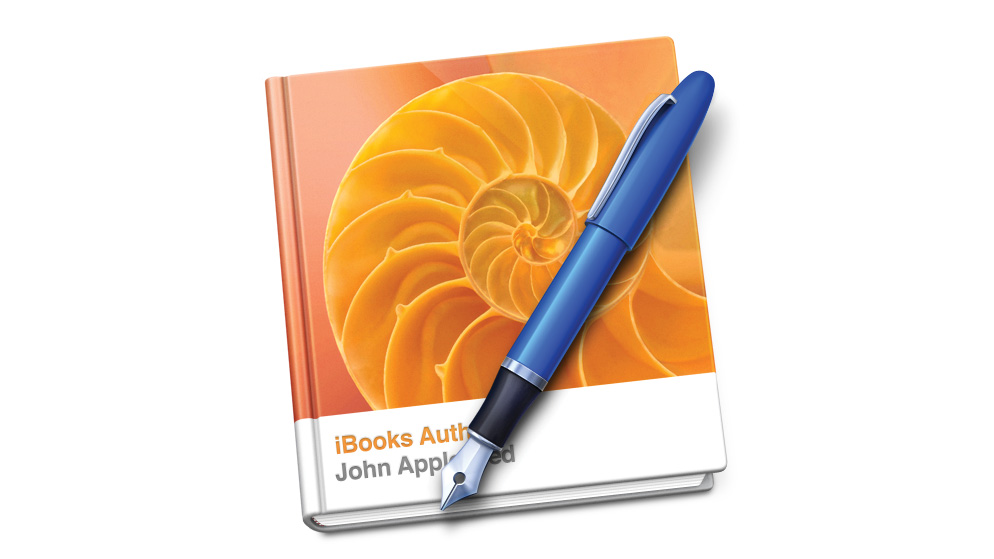
Alongside more series design apps, iBooks Author seems very basic – but that’s kind of the point. The purpose of this free Mac app is to provide tools for anyone to create their own ebooks and distribute them through the store.
45. MacBook Pro (2006)
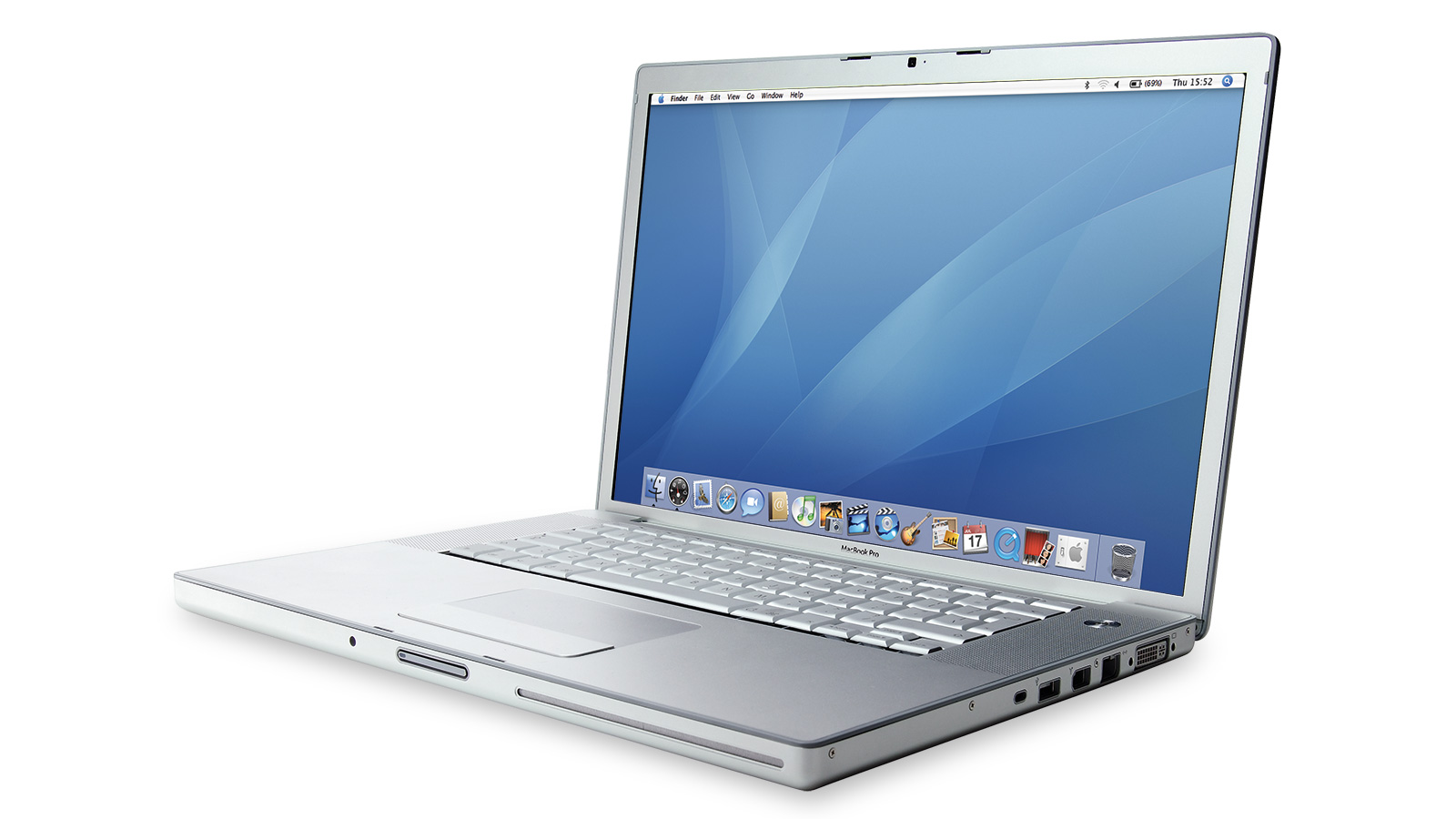
The Pro version of the MacBook has become the default option for creatives who need raw power in a portable form. The original was powered by Intel chips, had multiple ports and paved the way for the powerhouses of today.
44. Power Mac G4 Cube (2000)
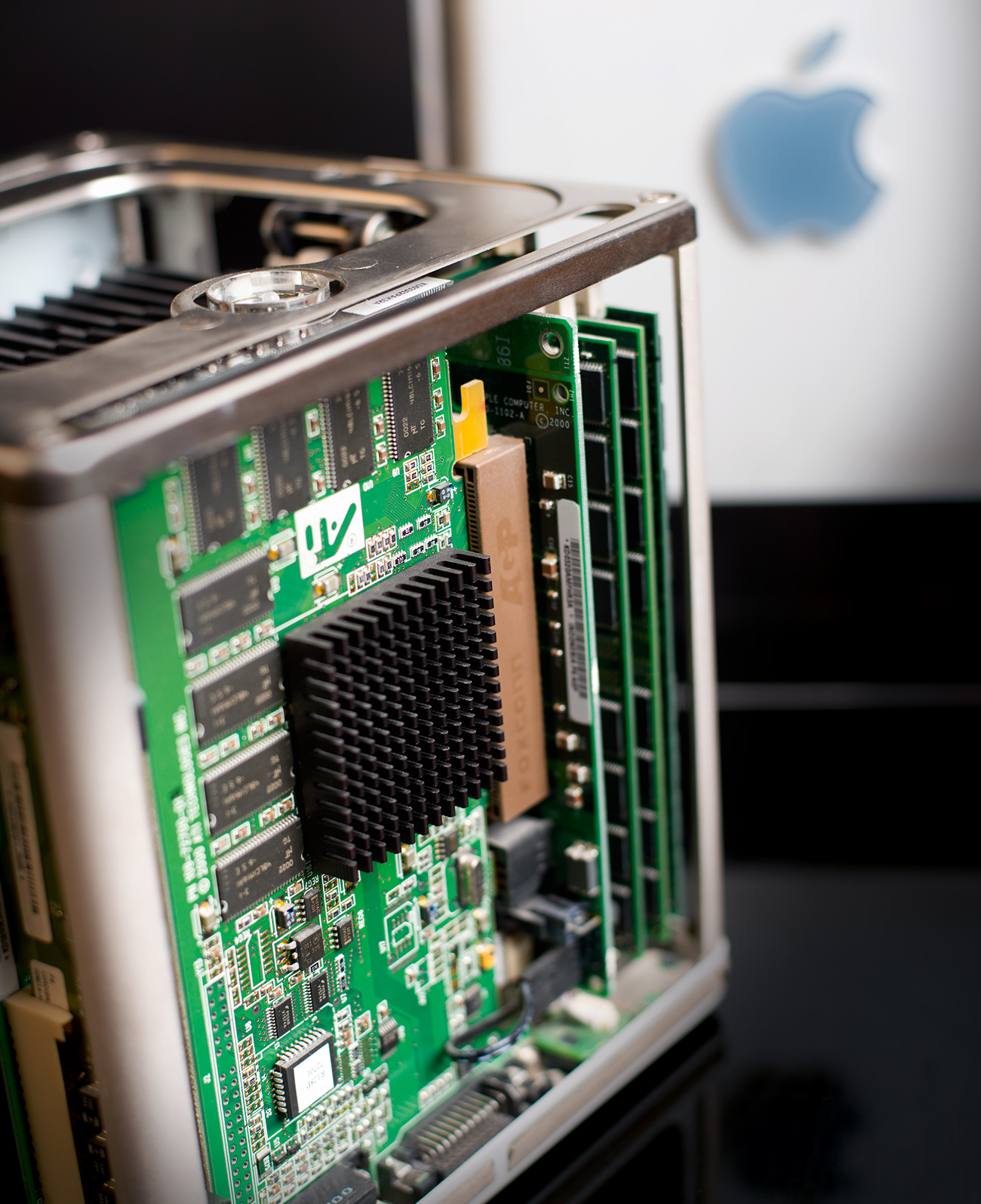
Nearly 20 years on and the design still looks amazing. The Cube was suspended within a larger cube that was clear and the specs were competitive at the time. Sadly it was not competitively priced against other Apple computers, some of which included monitors, which meant its lifespan was short. If we look back at the design today, however, we see a Mac that was hugely ambitious in the right ways.
43. Find My iPhone (2013)
Since launching with iOS 5, this app has proved essential for finding misplaced Apple tech. It allows remote location tracking of iOS devices, Macs, Watches and AirPods and now works through iCloud so you can start finding them through any computer.
42. Mac Pro (2008)

The Mac Pro from 2008 was a beast of a product with two 2.8GHz processors, 2GB of RAM, 320GB hard drive and the ability to expand it as you needed. The design was quite stark to say the least and it took a very long time for Apple to get round to replacing it.
41. Aluminium PowerBook G4 (2003)
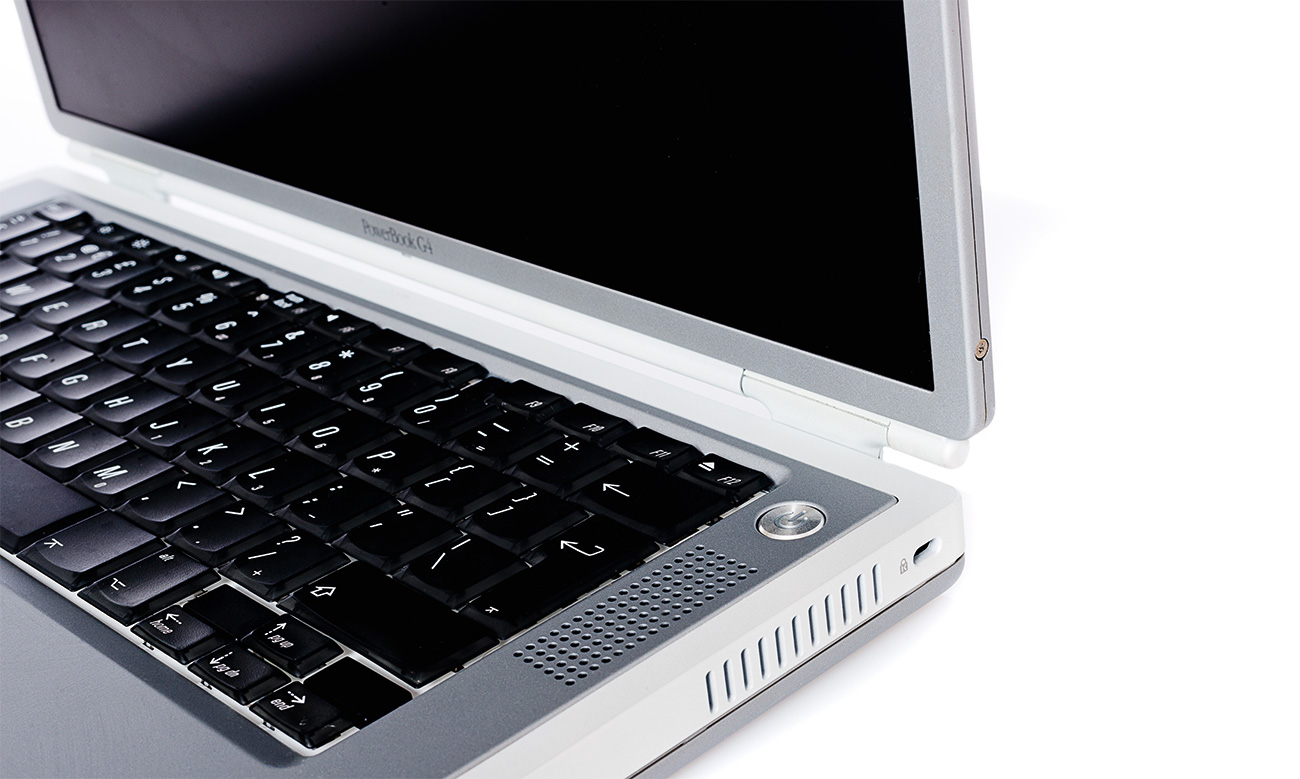
Apple’s love for aluminium is well known and the PowerBook G4 emphasised the skill that was used to develop this product perfectly. Only Mac OS X could be run on it, but the end result was a laptop with a superb keyboard and a design that would fit in any environment.
Next page: Best Apple products 40-21
40. iSight Camera (2003)
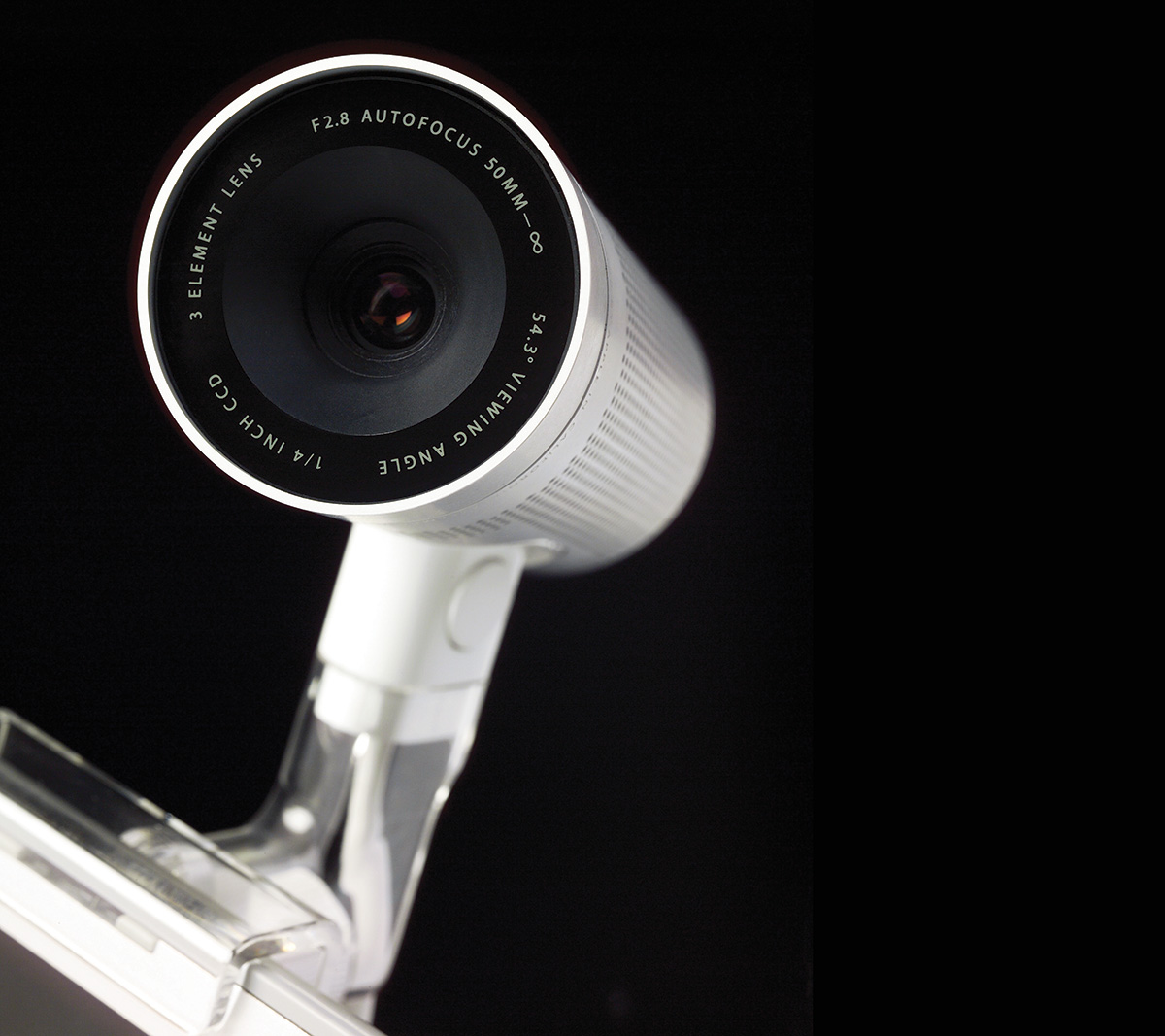
The original iSight Webcam was a short-lived product, but the term lives on as the camera in iMacs, MacBooks and other devices. It is a basic camera that is unobtrusive within a larger product, but when used for FaceTime and other tasks it can become indispensable.
39. Touch/Face ID (2013)

The PIN feels archaic today thanks to Touch ID and Face ID. Apple nailed fingerprint activation and did the same with Face ID using a clever dot projector module for extreme accuracy. Even better, the info sits on a secure module within the device and nowhere else.
38. PowerBook G4 Titanium (2001)

The design is what we remember the most, but the specs were also impressive, providing a worthy experience in a small space. Perhaps the first Apple laptop to emphasise professional design and capabilities in one product that appeals to everyone.
37. iPhone 5s (2013)

The iPhone 5s debuted Touch ID and was the first device to bring a 64-bit processor to the smartphone world. It may have looked identical to the iPhone 5, but these extras paved the way for future mobile developments that would go on to become industry standards.
36. Apple Pay (2014)
Apple is always happy to disrupt traditional industries and Apple Pay is no exception. With an emphasis on security and ease of use, Apple Pay has revolutionised the way we pay for things and it will likely be one of the dominant forces in the retail world going forward.
35. Apple LaserWriter (1985)
The LaserWriter may look like just an old printer, but it was instrumental in the early growth of desktop publishing. It was very much a business product due to the price, but it offered one of the best print offerings available at the time. If only Apple made printers today…
34. AirPods 1st gen (2016)
To understand the impact of AirPods just look around you. They are everywhere. With excellent sound quality, an innovative battery charging case and a distinctive design, they are one of the most Apple-like products made to date. The ideal earphones for iPhone users.
33. iPod mini (2004)
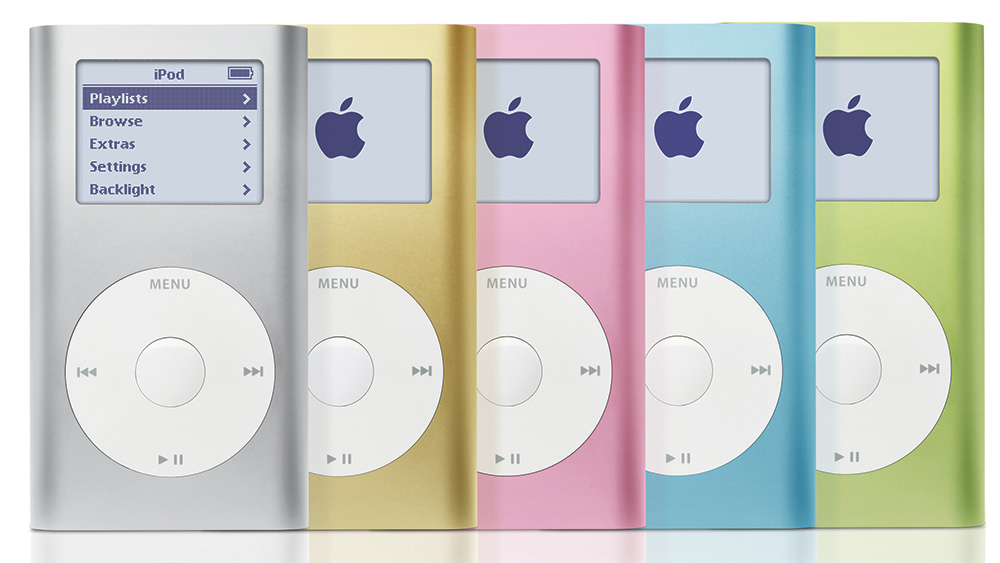
With the iPod mini, Apple demonstrated just how skilled it was at miniaturising devices to levels not previously seen. The beloved click wheel remained as the key controller just below a perfectly readable screen, but ultimately it succeeded because if its size. With 4 or 6GB of storage on offer in a device that was only 3.6” high, people could now run, commute and do anything else without even realising they had the device with them. Throw in eight hours of battery life and the excellent sound quality and it was destined for success from the very start.
Strangely, this actual design did not survive for too long because Apple took the miniaturisation even further, but we can look back on the first iPod mini now as a very important part of the company’s history. It was a simple, elegant device that really did tick every single box.
32. iMac Aluminium (2007)
Apple had tinkered with various iMac designs until the Aluminium version in 2007 stuck to this day. With everything stored behind the screen it is not the easiest to expand or fix, but the end result is a very powerful computer that is supremely elegant in its design.
31. Macintosh PowerBook 520 (1994)
The 500 series of laptops propelled the format to a new level with many firsts built into the product. Stereo speakers, an internal expansion bay, 16-bit stereo sound and ethernet were new to the laptop form and they showed everyone a glimpse of the mobile computing future.
30. Keynotes (2005)
Various people have undertaken Apple keynotes, but Steve Jobs was the king of the ‘Stevenote’. Who can forget his "A widescreen iPod with touch controls, a revolutionary mobile phone and a breakthrough Internet communicator" description of the iPhone back in 2007?
29. Apple Stores (2001)
Apple has grown its store portfolio in 18 years to more than 500 locations and has now reached the point where the sales per square foot are among the highest in the world. With highly valuable retail space the stores are welcomed anywhere because they generate so many ancillary sales via the extra footfall they bring in.
The design of the stores is minimal yet professional while retaining a welcoming sense that never feels overwhelming. The products are obviously key to the process, but the attention to excellent customer service and seamless repairs and sales make the real difference to the experience for customers. Apple’s way of handling retail is an example to all competitors who are battling the declining bricks and mortar retail industry – to this day Apple and its cleverly named Geniuses still stand head and shoulders above the rest. No other retail space quite matches an Apple Store.
28. FaceTime (2010)
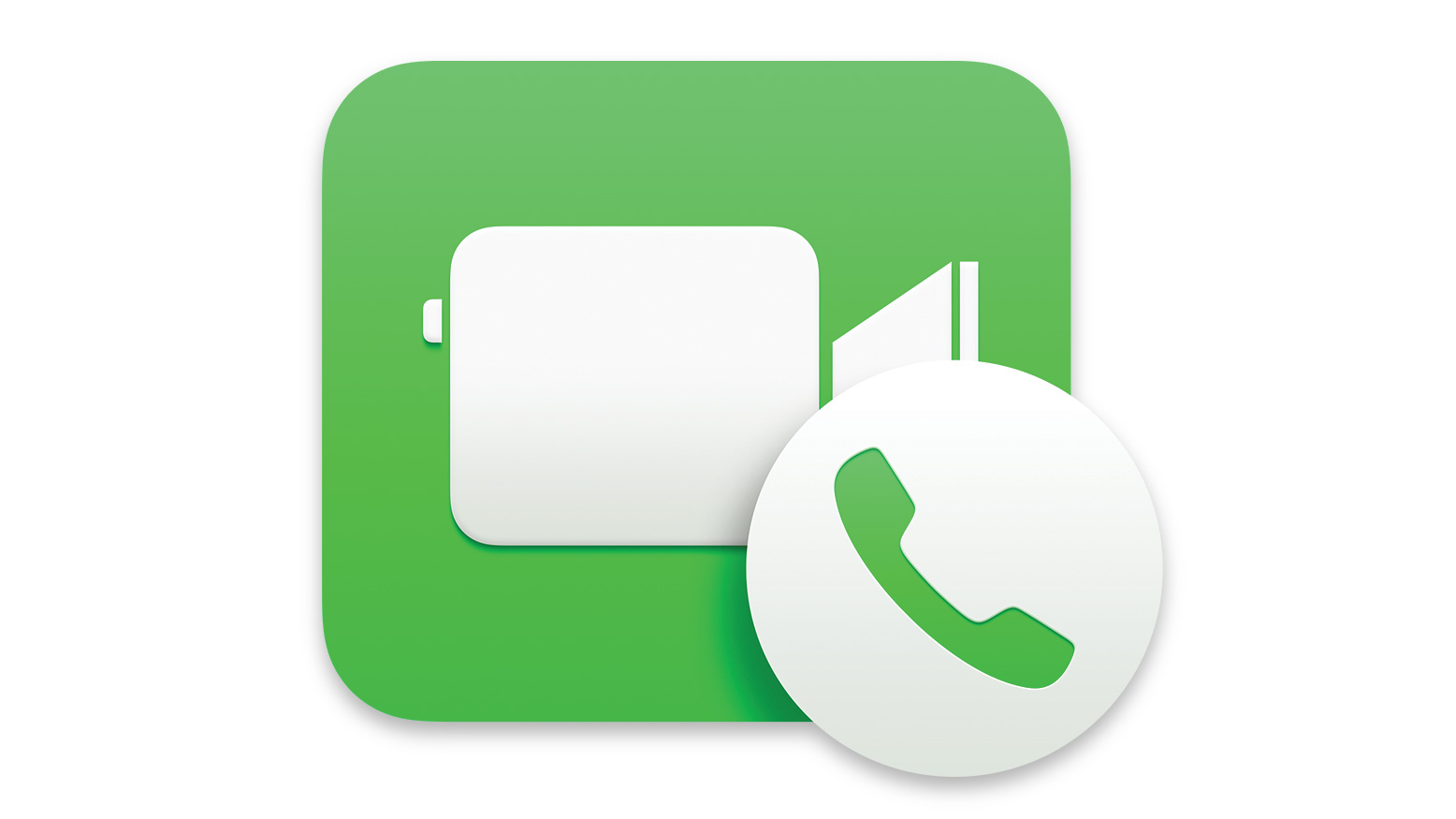
FaceTime is arguably the smoothest and easiest video communication software available today. It works on Macs, iPhone and iPads and has grown into a solution that even global businesses can use for multi-party conference calls with little setup required.
27. Newton MessagePad (1993)
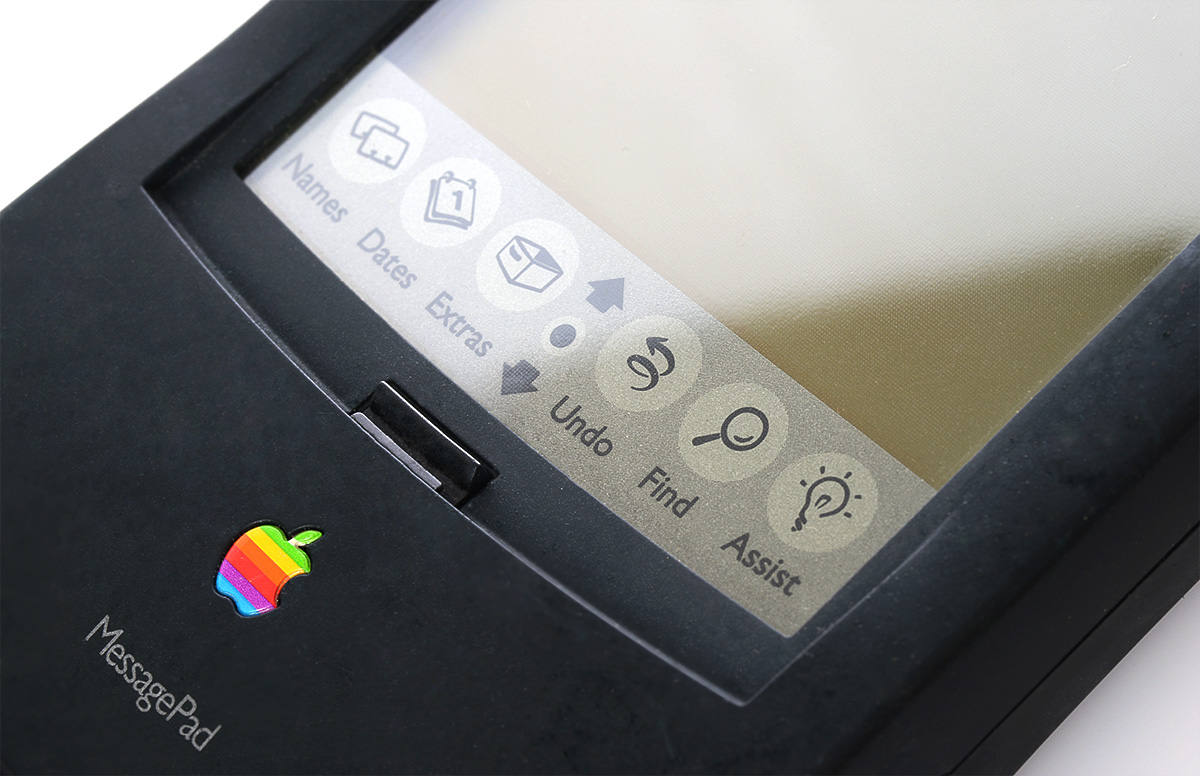
The MessagePad 100 was a hugely impressive portable computer which offered handwriting recognition, Newton OS and up to 4MB of memory. It was way ahead of its time, both technically and culturally, but the huge popularity of Palm PDAs showed that you could keep organised with a much smaller device and we did not see anything like it again until the iPad arrived in a modernised form. To this day the MessagePad has many fans.
26. iPad mini 1st gen (2012)

The iPad mini represented a halfway-house between the iPhone and full-sized iPad and for many people the smaller, yet bigger than iPhone, screen was perfect for working when out and about. Remarkably, if you use an original today it still performs very well.
25. PowerBook 100 (1991)

You may be surprised to know that the PowerBook 100 was manufactured by Sony for Apple and that despite the high price it was the lowest powered of the PowerBook family. With a 16MHz processor and 2MB of RAM it was decent enough and rather fetching.
24. Apple Pencil (2015)
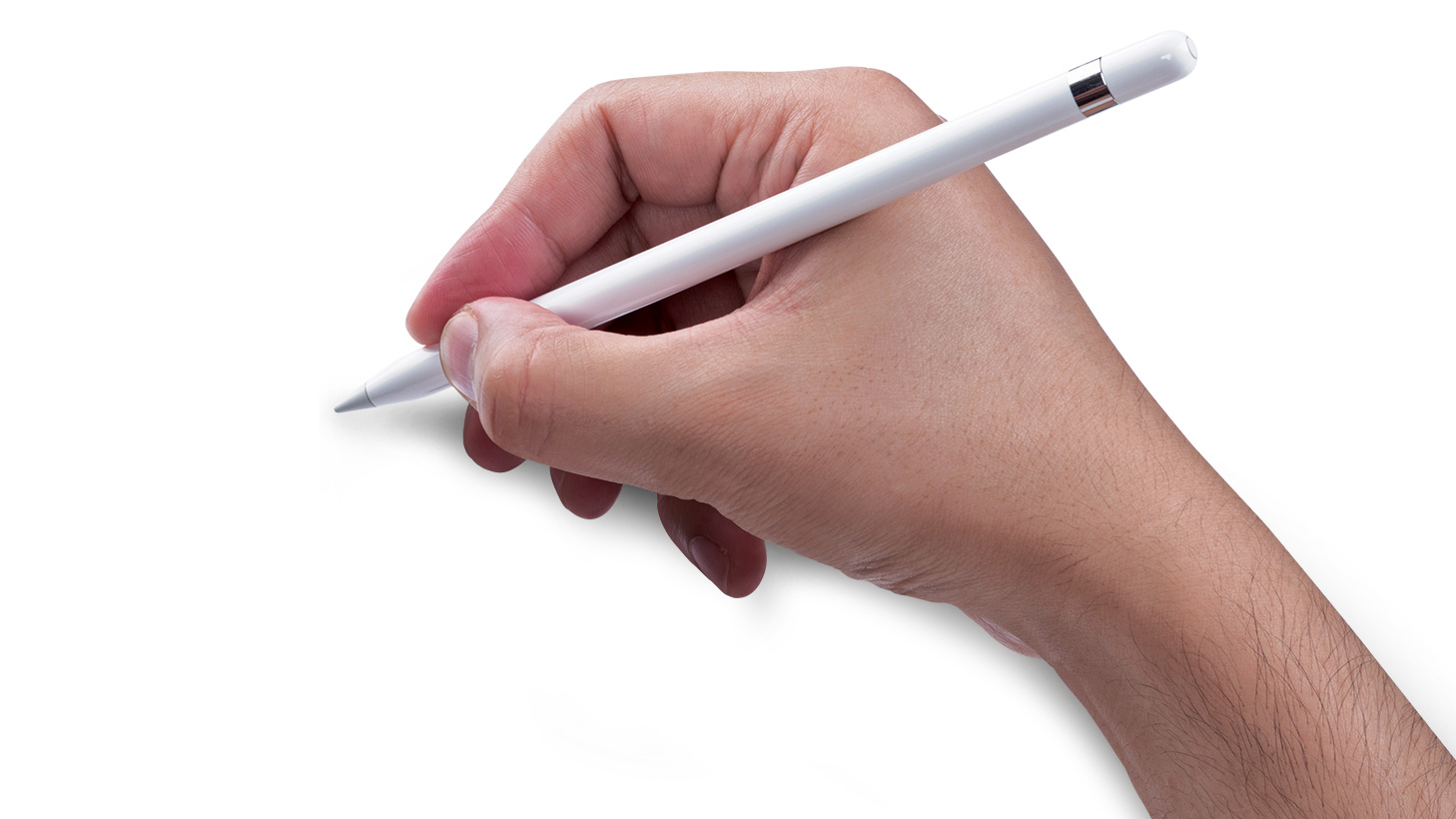
The Apple Pencil added a new layer to Apple’s reputation of being a tech company that works for creative people. Marrying the traditional pencil with high-tech innovation, it offered a smooth digital writing experience, which has since been improved even further.
23. Apple TV 1st gen (2007)
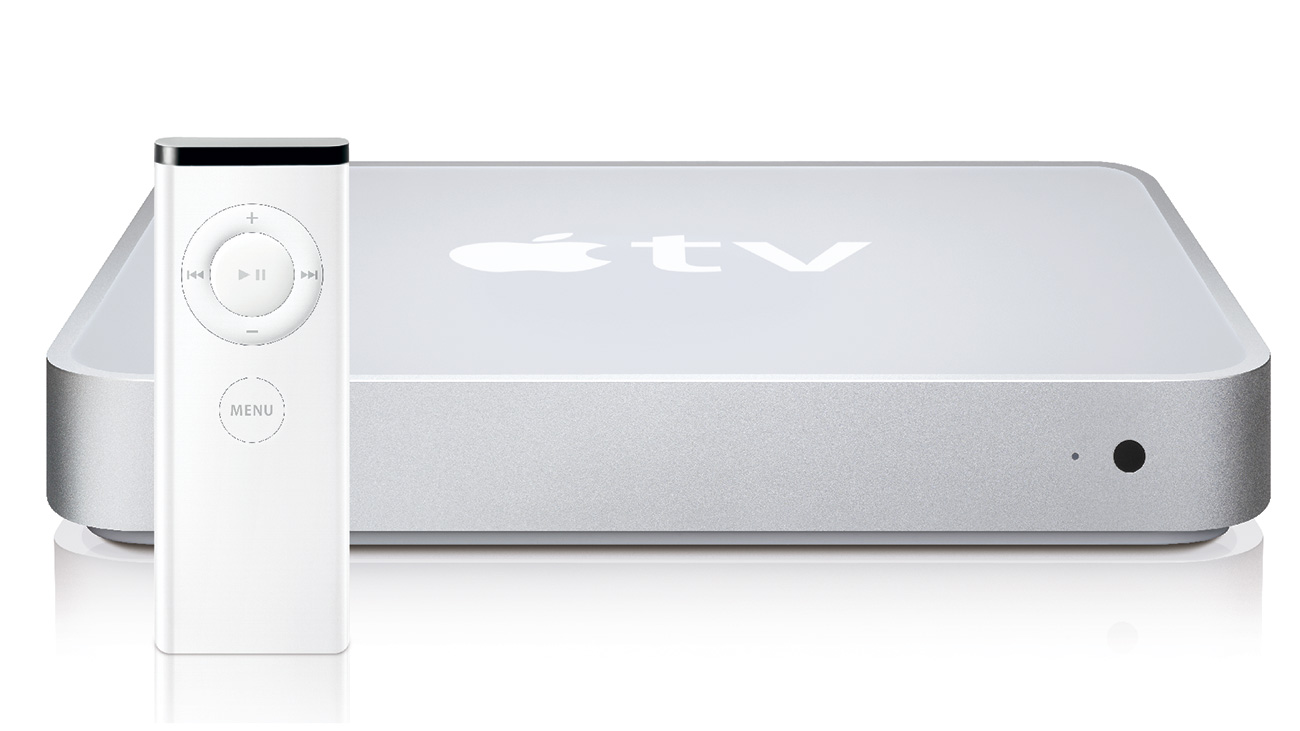
The original Apple TV opened our eyes to a world where your TV could be so much more. Prior to smart TVs and the huge growth of competing devices from Amazon and Google, it offered seamless movie playback, wireless control and a sublime interface.
22. Apple QuickTake 100 (1994)

One of the world’s first consumer digital cameras, the QuickTake 100 was easy to use and could connect to any Mac via the serial cable. The camera had enough onboard memory to store eight 640x480 photos or 32 320x240 photos but no focus or zoom controls.
21. iPod touch (2007)
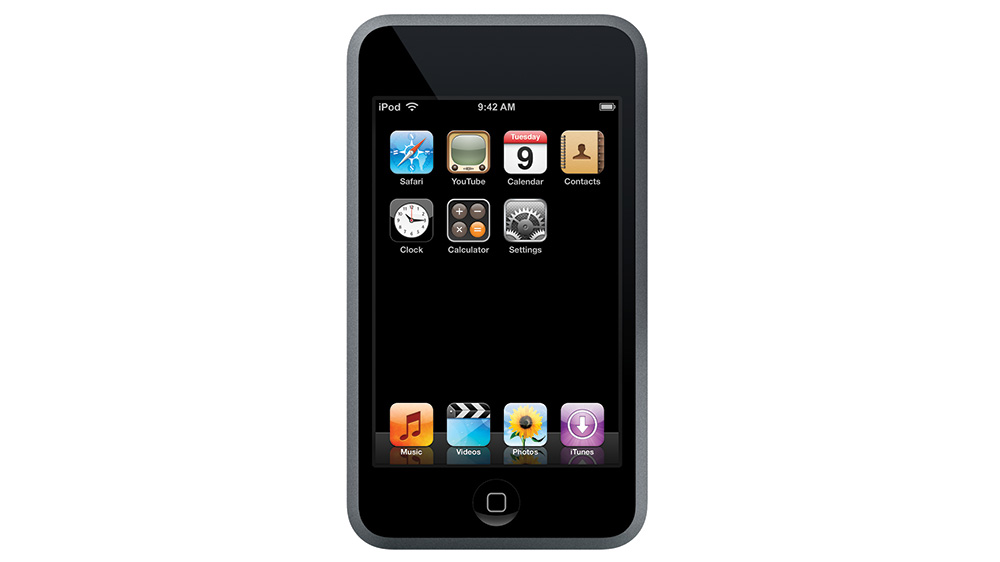
The iPod touch gave people apps and music on a device that was thinner and cheaper than the iPhone. To this day it offers many benefits and with a large screen, quick processor and a familiar form it could easily be considered to be an iPhone in almost every regard.
Next page: The best Apple products 20-6
20. Power Macintosh G3 – Blue & White (1999)
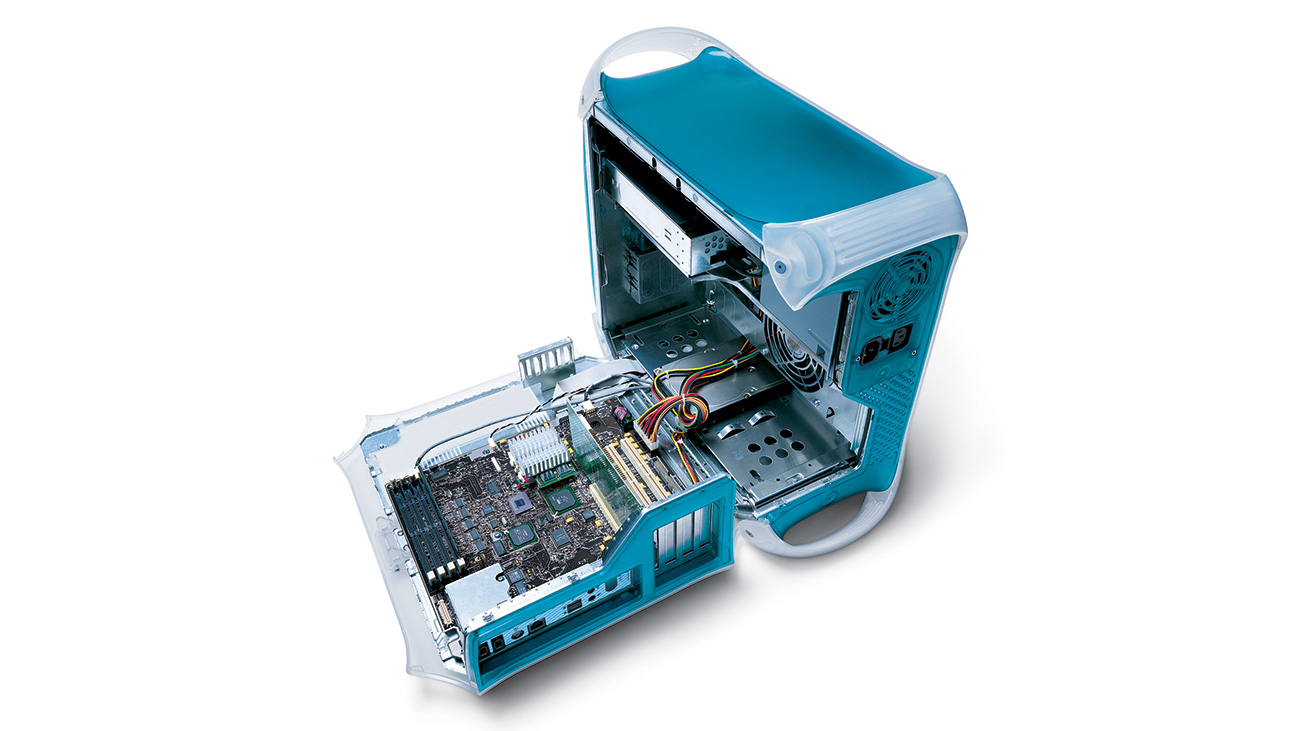
The ‘Blue and White’ G3 looks very much like the Bondai Blue colour used in other Apple computers of the time and it certainly added visual spice in comparison to its beige peers, especially with its matching keyboard and mouse.
The internal components could be accessed easily and without special tools via a folding door on the side of the unit that swings down onto the desk, and the iconic casing included handles in the corners for easy transportation. It was a powerful tool for the time which did exactly what it needed to, but the design itself is what is the most fondly remembered as it took the colour cue from the iMac range and used it subtly and more stylishly in a tower Mac that was worthy of seeing in the new millennium.
19. iPhone 5c (2013)
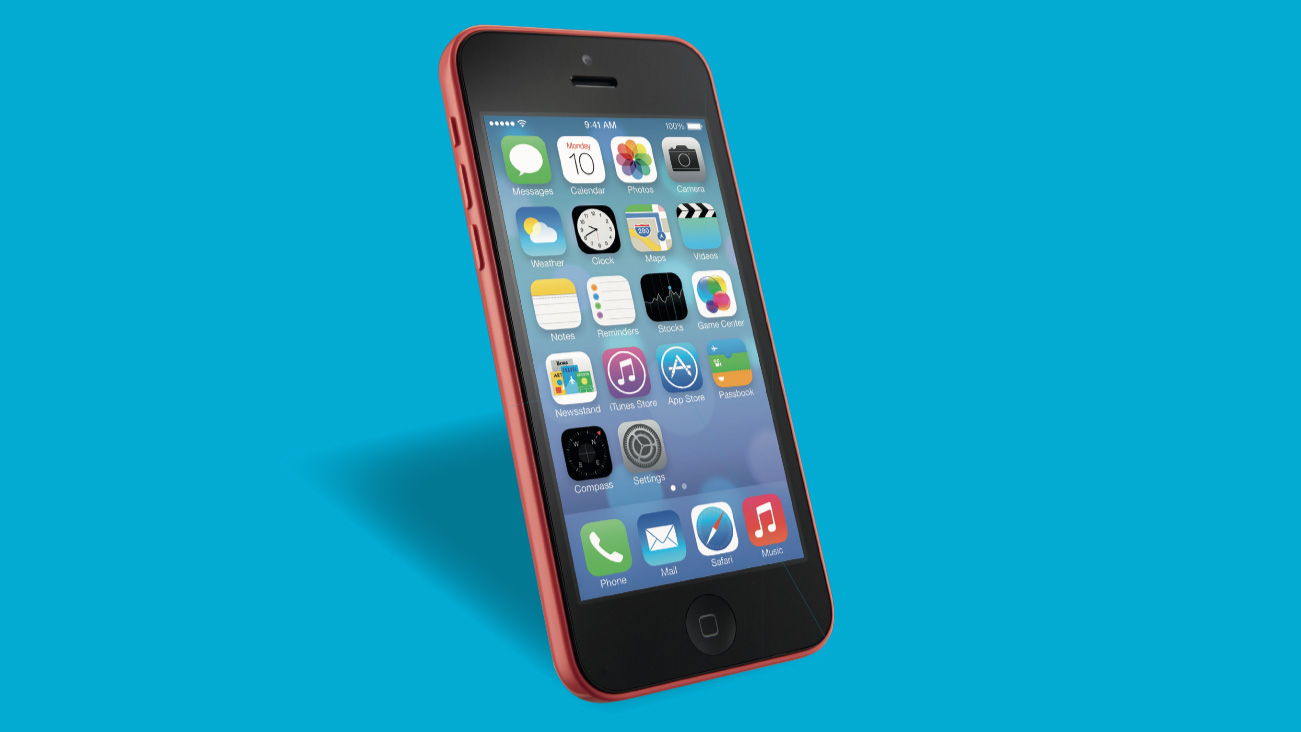
The iPhone 5c was the cooler and cheaper iPhone that was designed to expand the number of iPhone owners and add more choice for consumers. It most certainly did this. Featuring a durable, polycarbonate case (in blue, green, yellow, pink or white colour options) that allowed the device to stand up to the rigours and activities that go with being a teenager/young adult, the iPhone 5c served as the entry-level Apple product for a new generation of younger customers who would then become hooked on Apple products for life.
In the wider world of Apple firsts, the iPhone 5c does not particularly stand out from a technical point of view, but it certainly tapped into our imagination and allowed us to own an iPhone that was colour co-ordinated to match our style.
18. MacBook Air 1st gen (2008)
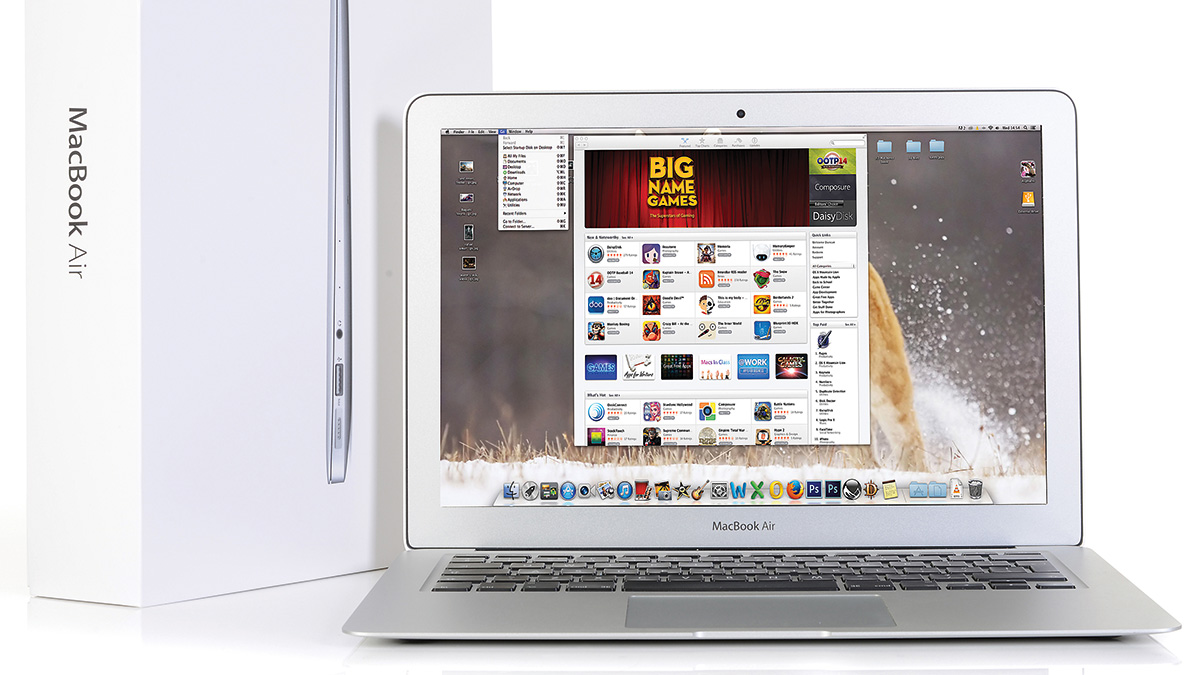
To understand how influential the original MacBook Air was all you need to do is look at the competition today. So many modern laptops look like the Air and it would be more than fair to say that Apple nailed the design first time. Initially only available as a 13.3-inch model, the Air was launched as the world’s thinnest notebook to mixed reviews. Praised for its light weight and portability, but criticised for offering limited configuration options and ports, the Air now serves as Apple’s entry-level laptop. Which is not too bad a place to start.
17. Mac OS X ‘Cheetah’ (2001)

Mac OS X offered some subtle visual changes to the main Mac environment, including the Aqua user interface, and formed a vital part of the evolving history of Apple’s desktop environment. Bit by bit the features have been built up and Mac OS X is considered by many to be the first step in making the operating system fit for the modern age. When it was released, OS X required double the amount of RAM currently used by most Apple computers and slowed down many more Macs that could support it, yet the love affair still persisted.
16. iPad Pro 1st gen (2015)

The 12.9-inch iPad Pro – originally released in 32- and 128GB versions – was Apple’s attempt at proving that the all-conquering tablet could be used for more creative purposes and for serious work. Along with the companion Apple Pencil (available separately), it pushed the boat out for interactivity and the push still continues to this day. Anyone who uses an iPad Pro can sense the massive improvements and we suspect that one day we will look back on it in the same way we do the iMac G3. It could have been the start of something huge.
15. App Store (2008)

Mobile apps used to mimic desktop software with registration codes and painful installation processes, and then the App Store arrived… Overnight, all of a sudden, apps could be bought for pennies and installed in seconds, and developers rushed to create games and tools for a growing army of users. Some developers became millionaires, Apple built a seamless mobile app empire and today we all have countless apps with us all of the time. It was and still is an extraordinary achievement and will only continue to develop further.
14. Macintosh Classic (1990)
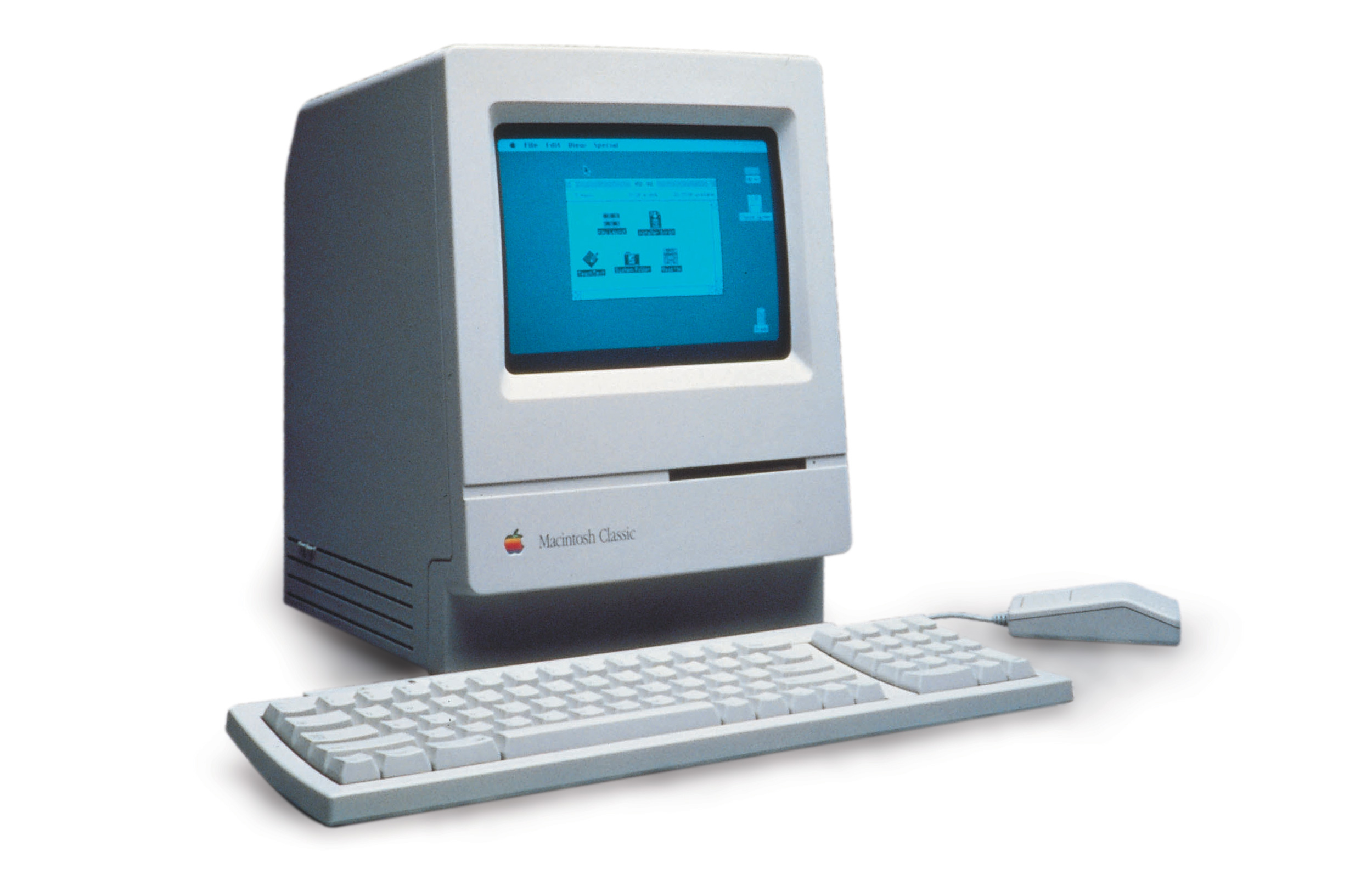
The Classic is one of very few offerings from Apple that was designed to appeal to more people purely on a cost basis. Besides being the first Macintosh to sell for less than $1,000, it was not a huge jump in terms of technological prowess, but it was quicker than the Macintosh Plus (1986) and it did include a floppy disk drive for extra reach. Strangely, when we look at the Macintosh Classic today, the form of the computer is near legendary, whilst at the time concerns were raised over how uninspiring the product was to look at overall.
13. Siri (2011)

Siri was yet another Apple innovation that changed our relationship with technology forever. As a virtual personal assistant it has gradually improved over time, but it would be fair to say that offerings from Amazon and Google work better for many people. Where Siri shines, alongside all of Apple’s products, is that it is secure and this is why it is slightly limited in what it can do. The fact is, however, that Siri is still a marvel on any Apple product and new ways of utilising it are constantly being woven into the fabric of Apple’s operating systems.
12. iPhone 1st Gen (2007)
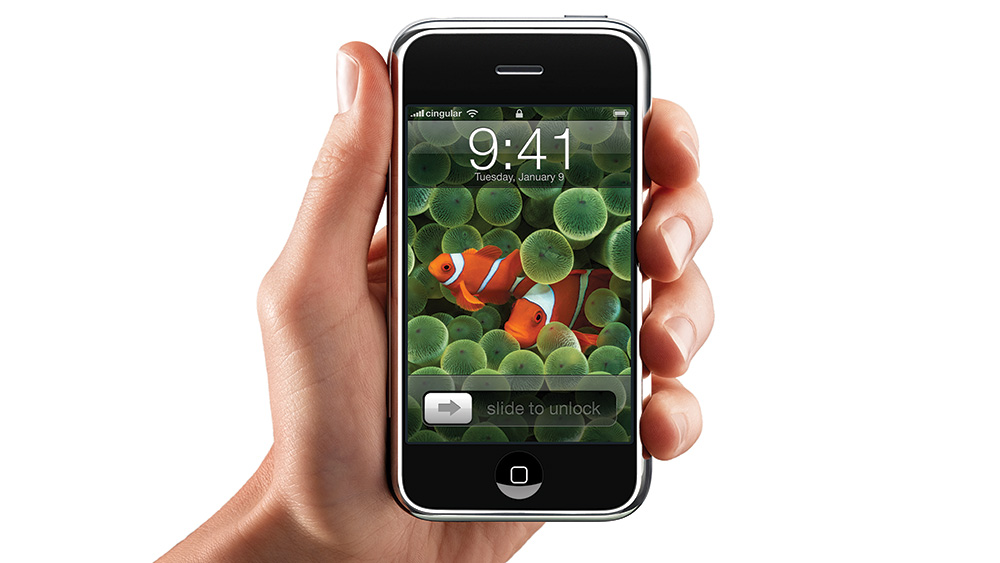
Apple’s most successful product ever completely changed the way we communicate with each other and consume information. It made smartphones approachable and, despite not including third-party apps or 3G connectivity, it easily demonstrated the potential for such a device by ditching a physical keyboard and stylus control in favour of a pioneering touchscreen interface that has become the norm.
The competition eventually caught up, but still today the iPhone offers a smoother and more secure experience than any other phone available. When you think of Apple the iPhone immediately springs to mind which sums up the influence and importance of what is possibly the most iconic piece of technology ever.
11. iCloud (2011)

Apple was late to the cloud storage game and it would be fair to say that the initial iCloud offering was basic when compared to the competition. Over time, however, it has grown to power much of the iOS and macOS ecosystems and it works quietly in the background to keep you working and playing anywhere. As iCloud has developed into apps such as iCloud Drive and Files, it is now easier than ever to move files between devices and, of course, your iCloud account can be accessed on any web browser from any computer.
It is so important now that without it all of the Apple products and app offerings would be much less capable to the point that Apple would not be what it is today. It’s like magic glue, and you don’t even have to think about it.
10. Apple Macintosh (1984)
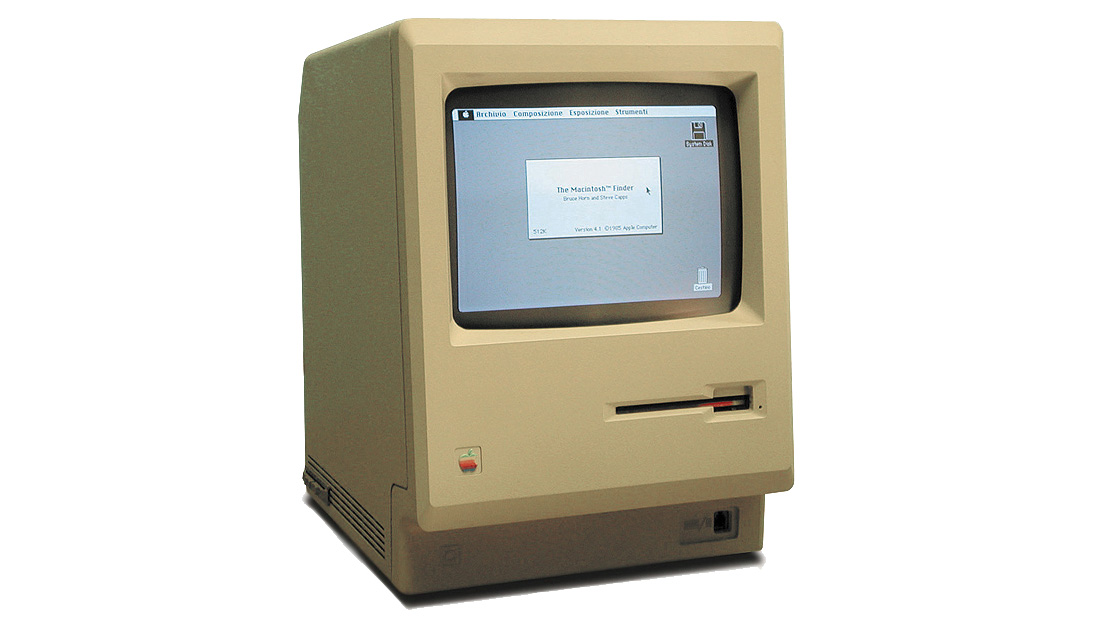
For all of the importance of the very early Apple computers, the Macintosh 128K is the one that continues to live on today and not just in name (iMac, MacBook, etc). The graphical user interface, built-in nine-inch screen and mouse made the Macintosh the first to include all three and thus it shaped what we consider a computer to be today. The beige case also had a handle built into the top for portability.
The lengthy development process and advanced technology made it a highly impressive offering, but the price was in stark contrast to the computers that were dominating at the time, computers that focused largely on gaming. Also, it was not easy to expand, which meant that it struggled to compete in multiple areas. The Macintosh was in many ways ahead of its time and Apple invested hugely in trying to make it as successful as possible, but it is only now that we can look back and realise just how important it was in creating the Apple we know today. You should also make a point of looking up the Ridley Scott-directed 1984-themed Super Bowl commercial on YouTube, which first introduced the Apple Macintosh onto the global computer stage.
09. iTunes (2001)
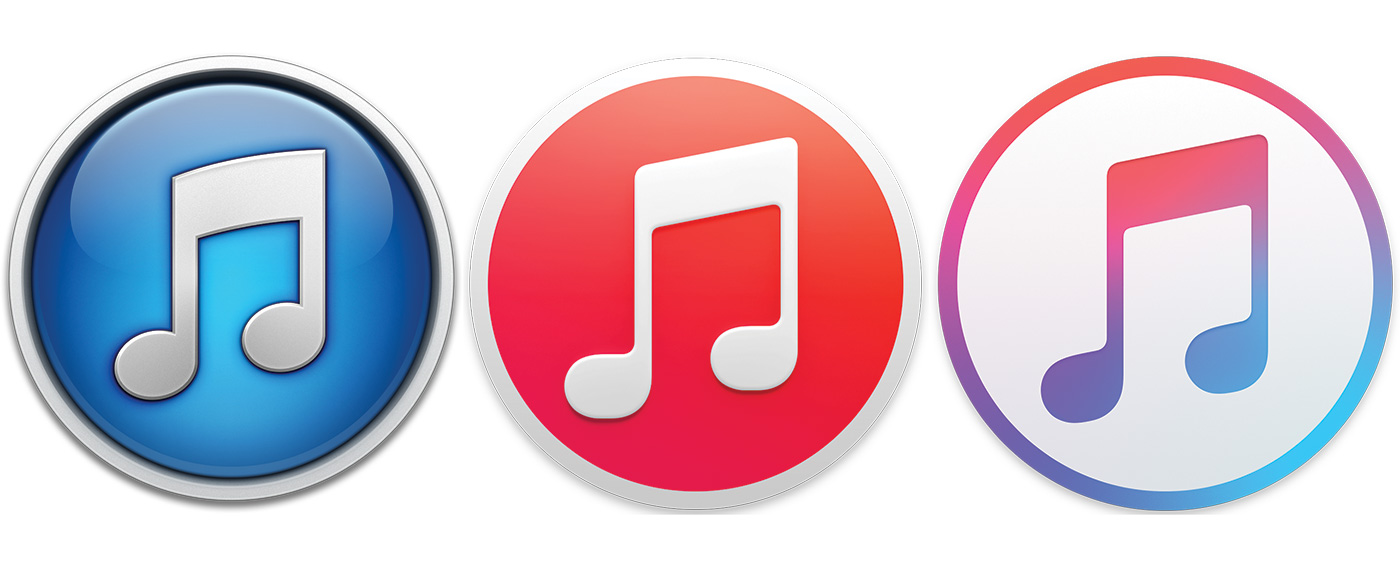
iTunes was just another software solution when it was initially released, but the soon-to-come iPod changed all of that. Together they welcomed millions to the world of digital music and quickly killed off the market for illegal music sharing. For many, iTunes provided the means to rip their music CDs and convert the content for their iPods to store, allowing them to have their entire music collection ‘on demand’.
The iTunes Store grew quickly over time and has brought us a huge library of music, films and TV shows without the need for physical media to store them all on. Throw in the Apple TV, AirPods, iPhone, etc, and you have a solution that is much more fundamental to the world of Apple than we often consider these days. Apple Music may be the darling of the moment and the likes of Netflix and Amazon are fierce competition, but there is no doubt that iTunes will continue in one form or another, maybe in the background, as Apple enters new markets to safeguard the future of all of its products. iTunes changed everything.
08. Mac mini (2005)
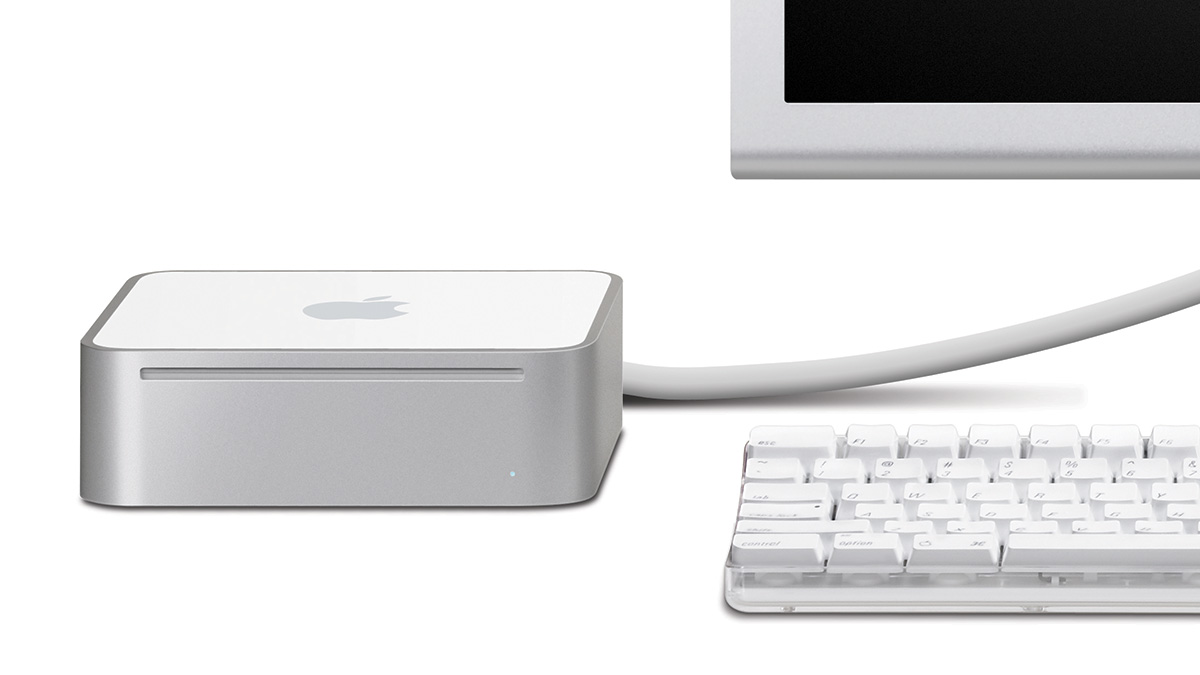
The Mac mini has not created a product line that changed the world like so many of Apple’s products, but it did offer a more affordable way into the Apple ecosystem when released, and this is still true today.
Apple’s only consumer desktop computer since 1998 to ship without a display, keyboard or mouse, the Mac mini has become a favourite of those who run data centres and it is also popular as a media player for personal use. As it was the first Apple computer to feature an HDMI video port, the Mac mini was perfectly positioned to serve as a home cinema hub and a more industrious alternative to Apple TV.
Its tiny size belies the power inside and it is perhaps its flexibility that has ensured its durability within a sustained period of huge change. Despite its intended use, Apple has never scrimped on the design of the Mac mini to the point where some want it to be a little bigger and to be even more powerful. No matter what your feelings about this particular product there is no doubt that it has offered a gateway to the world of Apple for many people over the past 14 years. It really does just work.
07. Apple Watch Series 1 (2015)

Potentially, the first Apple Watch is the riskiest major product that Apple has released in recent times. The smartphone was still relatively new in 2015 and to supplement it with a product that technically offered few extra obvious features could have gone horribly wrong, but it didn’t and over time it has become the dominant force in wearables.
Fitness has been at the heart of the Apple Watch experience and millions of people have changed their lives for the better thanks to the software and hardware onboard. From this they have then discovered how useful wrist-based notifications are and the variety of uses the product offers, and have taken it further by customising it with fashionable straps and other accessories. Remarkably, Apple is now the biggest watch company in the world and it has achieved this in the space of four years while overtaking companies that have been making watches for 100 years and more.
06. iBook G3 ‘Clamshell’ (1999)

Back in 1999, computers were for grown-ups and laptops were for powerful business people. And then the iBook G3 happened. Picking up the Bondai Blue thread, the iBook offered many design tweaks that are impressive – even 20 years later. The transparent plastic shell was beautiful and welcoming to look at, the carrying handle added much practicality and the wireless networking truly made it a first in the computer industry.
It was quite a large product due to the components within it, but this was made up for by the revolutionary design that looked nothing like any other computer on the market, apart from the iMac G3 of which this was the portable counterpart. It also added weight to the view that Apple was not just any other computing company; it was different, it was innovative and it considered the user above all else when designing new products. Like the iMacs, the iBook G3 was completely devoid of legacy Apple interfaces with USB, Ethernet, modem ports and optical drive as standard, demonstrating that Apple was only looking forward now and not back.
Next page: Best Apple products 5-1
05. Apple II (1977)
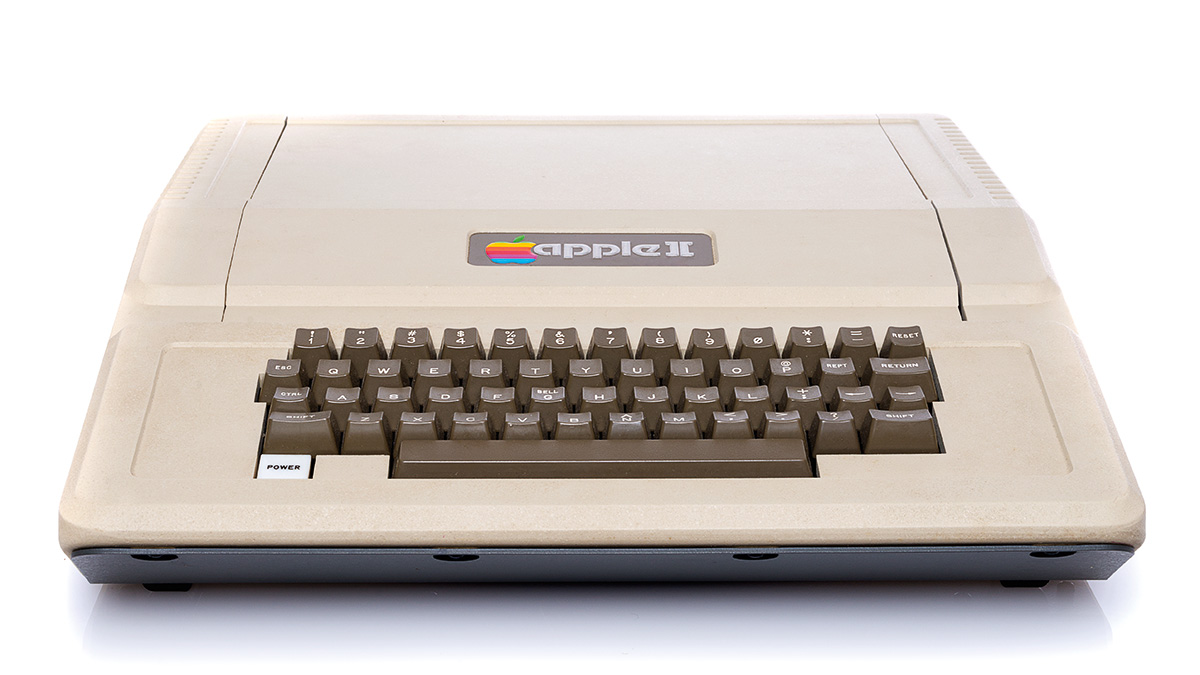
In the year that Star Wars hit the big screen, Apple was taking strides in turning science fiction into science fact! You simply cannot underestimate the importance of Apple’s first mass-produced consumer product, the Apple II. It helped to kickstart the computing industry and of course it did the same for Apple as a company.
With colour display capabilities, a pleasing case design (for the time of course) and a built-in speaker, it was one of the first computers to offer a personal slant that was maybe only truly appreciated later on. It also offered everyone the first glimpse of what Apple as a company was about and where its focus would lie in the future, but no one at the time could have guessed what would follow in the next 40 years.
The price was high, which went somewhat against the personal focus of the product and which hampered the sales numbers, but there was more than enough potential here to spur the company on and to open the eyes of millions of potential customers.
04. iPhone 4 (2010)
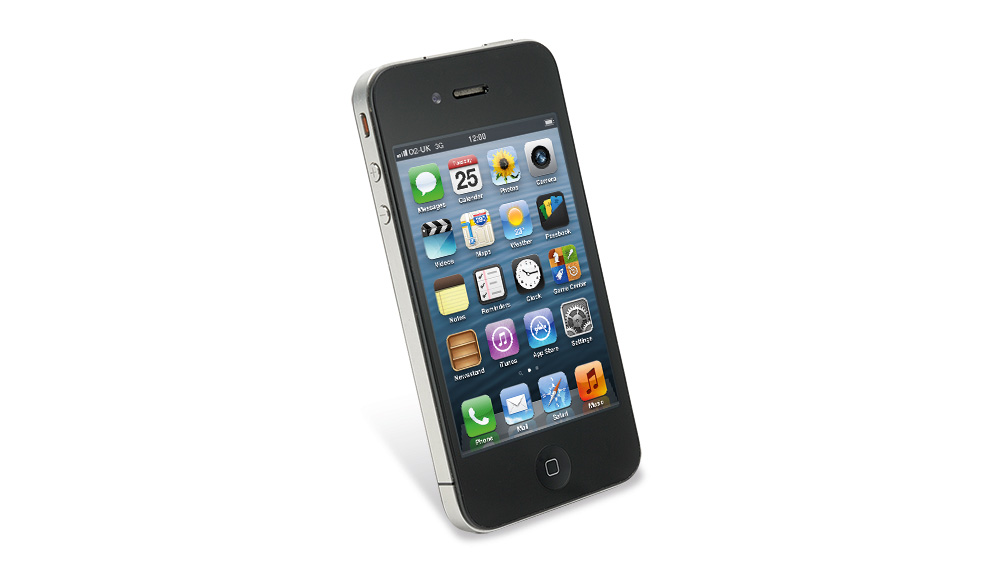
The iPhone 4 was to phones what the Bondai Blue iMac was to computers. It was all about the design and Apple showed that smartphones could be thin, lightweight and most importantly visually desirable. Of course there were many technical enhancements over the iPhone 3 range such as the A4 chip, iOS 4 with multi-tasking and FaceTime, but ultimately it was the new Retina display that made people look at phones in a whole new way. Throw in a clever stainless steel frame, which was also the antenna, and a glass back and you have a phone design that has arguably never been beaten. Apple was riding high with the iPhone in 2010 and this was also the first model to feature a front-facing camera and a gyroscopic sensor that detected angular acceleration around the X, Y and Z axes, enabling the precise calculation of yaw, pitch and roll – data that would be crucial in ushering in a new procession of tilt-based gaming possibilities.
There was some controversy surrounding how the antenna worked and also the fragility of the glass back, which spurned the release of the now classic bumper accessory, but overall the iPhone 4 was a huge success which took the entire industry in a whole new direction. When we look back over the history of the iPhone, and indeed smartphones in general, there is little doubt that the iPhone 4 represented a sea change in terms of how personal phones could be and how they can be more fashionable than anyone would have dared to dream of previously.
03. iPad 1st Gen (2010)
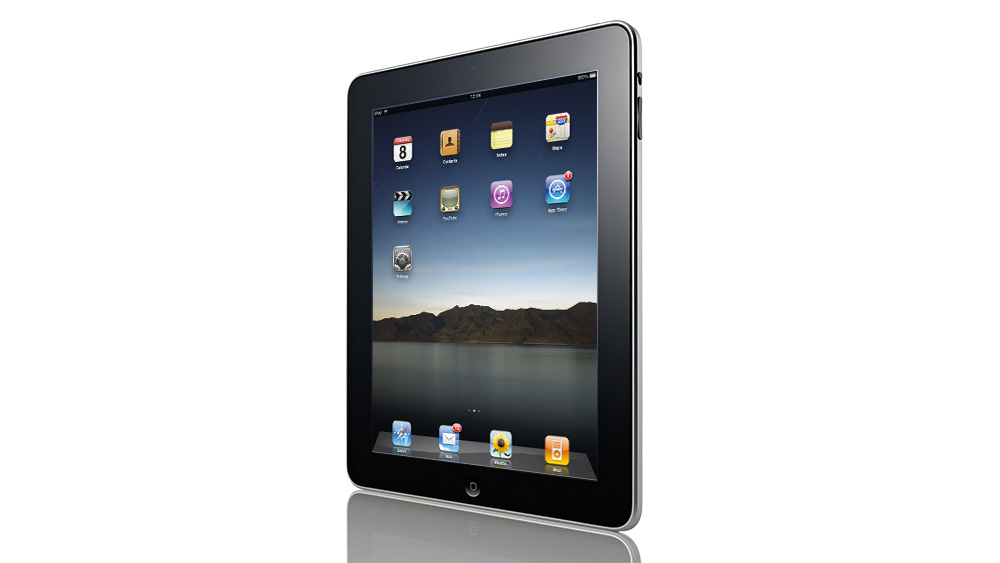
Some called the original iPad ‘just a big iPhone’ and as close to the truth as that is, it is also the reason why it was and remains so successful. The first generation was big and heavy by today’s standards, but it took a genre that Microsoft has tried and failed at previously and made tablets accessible to everyone. The super-sensitive screen worked perfectly with the visually expanded iOS and all of a sudden millions of people saw a new way of doing things without the need for a PC or laptop. The device featured an Apple A4 processor and a 9.7-inch display that allowed users to play music, check their emails and browse the web anywhere – even before the advent of public Wi-Fi hotspots, a 3G version was available so that you could maintain a connection on the move.
While the prediction of doom for traditional computing has not come true, largely thanks to Apple’s work on the MacBook, it is true that the iPad has come to dominate the tablet industry and also the way millions of people browse the web and entertain themselves today. The iPhone’s big brother remains a hugely influential product that is still used literally everywhere.
02. iMac G3 (1999)
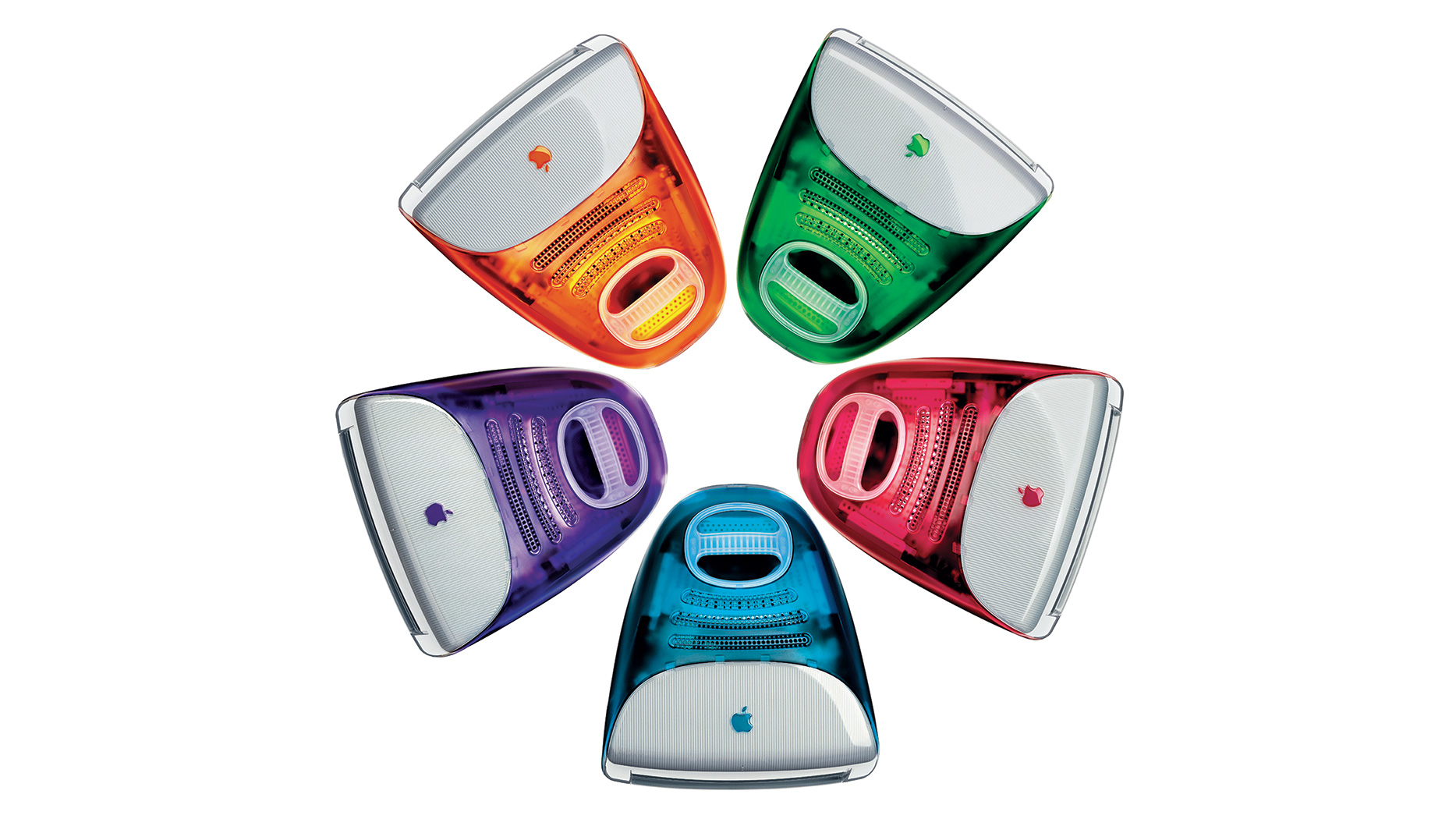
The Bondai Blue iMac, officially the iMac G3, was the first product to truly showcase the design skills of Jonathan Ive and the impeccable taste of Steve Jobs; but it was so much more than that. In a time when computers were bland beige boxes with no pleasing aesthetics at all, the G3 made people realise that they could actually offer visual personality.
The colour was the most obvious factor upon first look and this was supplemented by a handle to easily move the iMac around. USB ports were offered as standard, the floppy disk was dispensed with in favour of a CD-ROM drive and the ports were neatly hidden behind a colour-coded door. It was radical in every way and a huge risk at the time, but it paid off financially and also paved the way for how millions of people think of Apple to this day: not afraid to kill off current standards, innovative in design and technical ideas and able to push every boundary through different ways of thinking.
The ‘Think Different’ slogan perfectly exemplifies the iMac G3 and we would say that it is arguably one of the most important computers in history. Just like the iPod did to the music industry, the G3 introduced the world of computers to many more people and forced everyone to perceive them in a new way. It is arguable that the G3 kickstarted the huge rise in PC growth and that without it Apple may not have even survived.
The following year saw the introduction of the slot-loading iMac. This came in five additional colours (Blueberry, Grape, Tangerine, Lime and Strawberry) – a range that would go on to influence the colour scheme of countless other products at the time, including PlayStation controllers, such was their impact.
01. iPod 1st gen (2001)
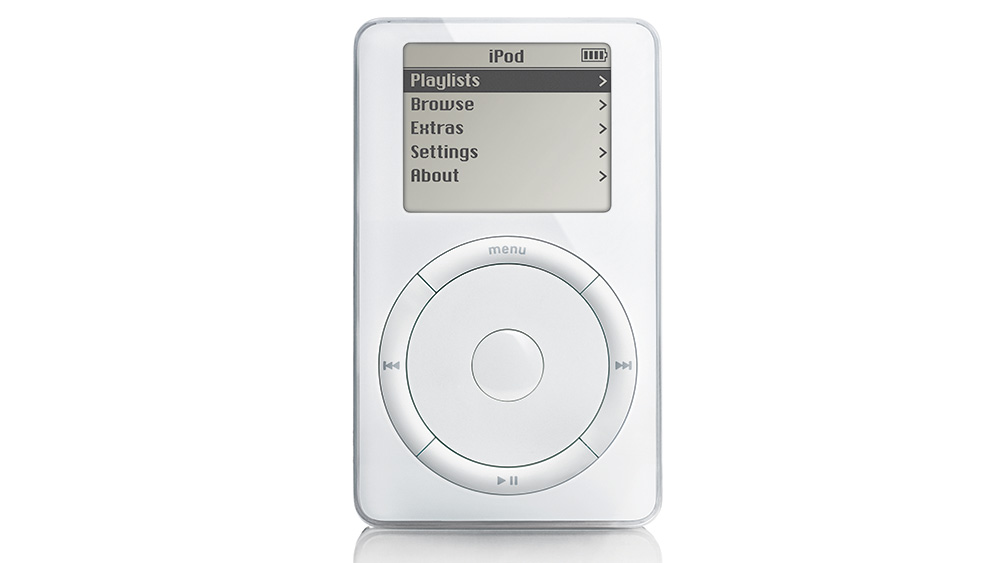
When the iPod was introduced it entered a fledgling market that was dominated by average quality sound and impractical music management. Not only did it come to dominate digital music, but it actually completely changed the way we consume all music and had a much wider cultural influence than could ever have been reasonably expected.
A few key factors came together to make this groundbreaking product – iTunes was released only months before the iPod and was the first software that enabled people to access digital music in an untechnical way. The user interface was actually created by an outside company called Pixo yet was so incredibly natural to use thanks to its integration with the game-changing click wheel which changed how we thought about human interaction with tech products forever.
Add to this the ability to carry around thousands of tracks, excellent sound quality for the time and 10 hours of battery life, and it became an assured success which grew over time to make the white cables dangling from the ears of strangers a completely normal sight. It was the new Walkman for a new century which grew to be infinitely more influential to the point we would argue that without the iPod we would not have the iPhone, iPad, Apple Watch and perhaps even Apple.
Its importance to Apple at the time cannot be measured, just as we now cannot conceive the influence it has had over every tech and music-related product in the two decades since it was first released. You can look at the original iPod today and see signs of its age, but fundamentally it would still be just as usable and fun as it always was, and it still screams Apple in every area. A genuine cultural icon.
Read more:
- It cost 50K to digitise: 5 surprising Apple logo facts
- Is Apple about to bring back its rainbow logo?
- The 10 most beautiful Apple products (and the 5 ugliest)
Contributer : Creative Bloq
 Reviewed by mimisabreena
on
Tuesday, July 23, 2019
Rating:
Reviewed by mimisabreena
on
Tuesday, July 23, 2019
Rating:














No comments:
Post a Comment